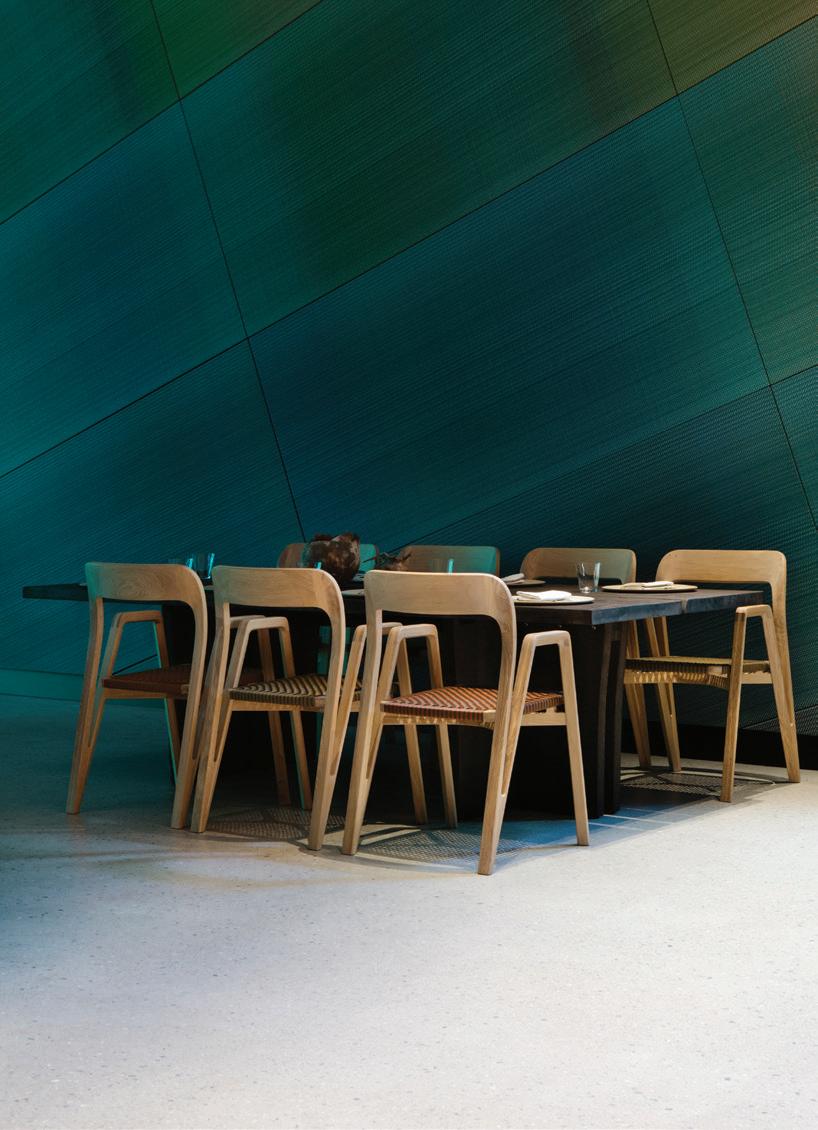
29 minute read
Product Developments

from Architectural Products - July/August 2022
by Buildings & Construction Group
Best Practices in Hand Sanitation ›› Soapless Cleaners
by Jeff Pitts Contributing writer
High-End Hand Sanitizing
Once upon a time, the idea of a wide-spread system of drinking fountains seemed silly. What would be the point? Public water buckets were readily available and equipped with a common drinking cup for anyone to slurp from. Ditto for doctors washing their hands before surgery—a practice that remained optional for most of the 19th-century.
Today, we know so much more about the important roll hygiene plays in overall health. For example, “80% of illness-causing germs pass by way of the hands,” explains Tristan Smith, a representative for Vaask, the hand-hygiene company.
“People don’t want to get sick,” he explains matter-of-factly. That’s true regardless of the disease’s
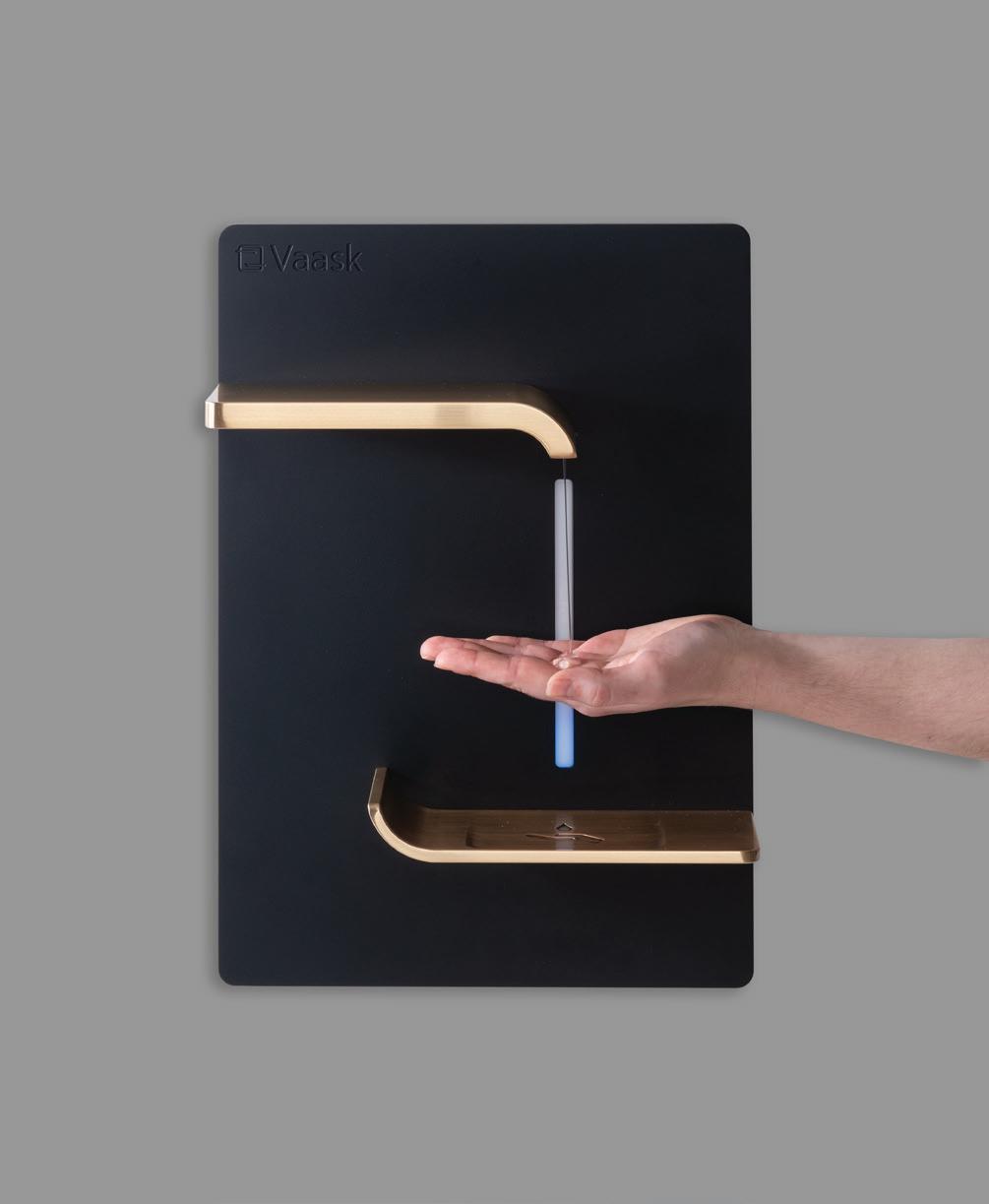
name, whether it is COVID or a head cold or some other communicable form of pain and suffering. The current pandemic’s conditions may have acted as the catalyst to speed this innovation along, but this product is a no-brainer even if and when the current contagion subsides for good. Being clean and practicing better hand hygiene will stand the test of time.
Vaask made a splash earlier this year when it debuted its high-end, hand-sanitizing unit. “No one has specified it before,” he says. So, when architects and designers at building and trade shows first saw the stylish offering, “They said, ‘Wow! Why has no one thought of this?’”
The concept is simple. How many times have you walked up to one of those haphazard, hit-or-miss, temporary hand-sanitizing units, and instead of getting a glob of germ killer, the broken machine is empty and inoperable?
Vaask is challenging the less-than-sanitary status quo by combining durability, reliability, and high-design in its all-metal, cast aluminum permanent hand-sanitizing fixtures.
The new product’s presence is being felt at award shows. Vaask has been recognized with the Red Dot Design Award, Time’s Best Inventions and Boutique Design New York—BDNY, to name just a few. “Basically, wherever we go, we win an award,” admits Smith.
Built to execute one million sanitization efforts during a machine’s lifetime, that is roughly two million hands served, Vaask solutions last roughly 10 times longer than the industry standard.
Another point of differentiation—laser range sensors that eliminate waste and drips with better palm detection and more precise dispensing capabilities. “These machines misfire less,” assures Smith, and are “without a peer in the industry.”
The price tag for a Vaask machine ranges from $1,200 to $2,200, but they should end up saving the buyer money in the long term. High-traffic areas can recoup the initial cash outlay in a year or so due to the reduction in maintenance and a more efficient use of hand sanitizer.
The ADA-compliant fixtures boast “touchless operation,” which seems quite sane in society’s quest to avoid germ-induced sickness, and the machines build directly into the wall. A non-professional installer can achieve installation in a half an hour, while, according to Smith, a professional should only need 20 minutes. Most machines will be livewired to AC, but the units do offer power-overEthernet (POE) capabilities to make installation possible without an electrician. Either way, the fixtures eliminate any reliance on batteries—a frequent headache with temporary machines.
HIGH END In the same way that you wouldn’t expect to find a bright blue porta-potty performing within a Ritz Carlton, you also shouldn’t expect to see rinky-dink, hand-sanitizing dispensers in society’s hotspots. Things designed to be temporary, do not generally work well in a permanent capacity. Inspired by the Norwegian word for “wash,” Vaask—pronounced V-ahh-sk—is like a breath of fresh air and embodies today’s desire for a higher class of clean.
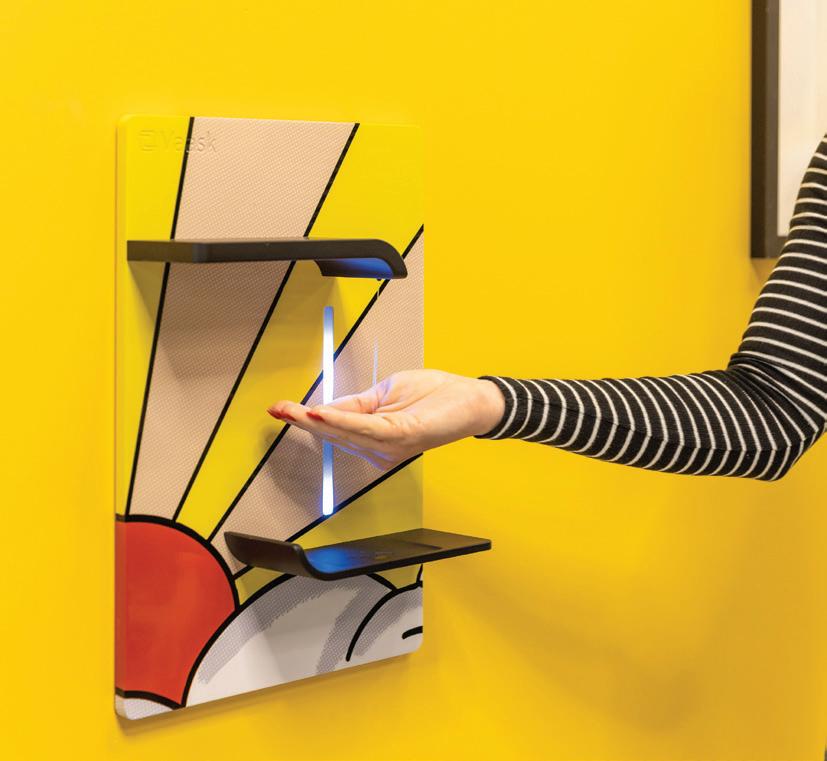

Sales have been encouraging across the board. Fed up with broken, empty canisters-on-a-stick, owners, operators, and on-site managers with an eye for style are saying: “Wall warts, be gone!” according to Smith. They need hand-sanitizing stations, but they are lusting for high quality, made-tolast machines with a desirable look and customizable finishes that will match any space.
High-traffic areas with high-touch intersections make perfect candidates for Vaask’s durable machines. The hospitality industry has been hot, including hotels, restaurants, and casinos, who are “chomping at the bit,” according to Smith.
Safety-first types also quickly understand Vaask’s value. This includes schools, businesses, and any establishment determined to demonstrate a concern for people’s well-being.
Easy access to hand sanitizer makes solid sense but doing so with temporary contraptions that frequently fail … not anymore.
“The phone is ringing off of the hook,” admits Smith. For more information, visit www.vaask.com.
material advances + product breakthroughs
Hands Off
While concerns about germs in the bathroom aren’t quite as high as they were at the height of the pandemic, 78% of those surveyed in Bradley’s 2022 Health Handwashing Survey say they are more conscious about germs.
Although this year’s study didn’t cover touchless fixtures, Bradley’s 2021 survey revealed great interest with 79% of office workers identifying no-touch fixtures as an important aspect of workplace restrooms and 84% stating the importance of touchless fixtures in public restrooms.
“Interestingly, two-thirds of office workers use a paper towel to avoid touching restroom door handles, flushers, and faucet handles,” said Jon Dommisse, Bradley Corp.’s vice president of marketing and corporate communications in last year’s survey. “This evasive action further demonstrates why touch-free restroom fixtures resonate so much with restroom users.”
Providing sanitary, clean bathrooms, particularly in retail and hospitality settings, has been proven to impact the bottom line as well. Whereas 69% of consumers will return to a store, restaurant, or hotel if the establishment offers clean bathrooms, 60% are unlikely to return if they had a negative restroom experience.
Here are a few products making it easier for architects to create that touchless restroom experience people are talking about.
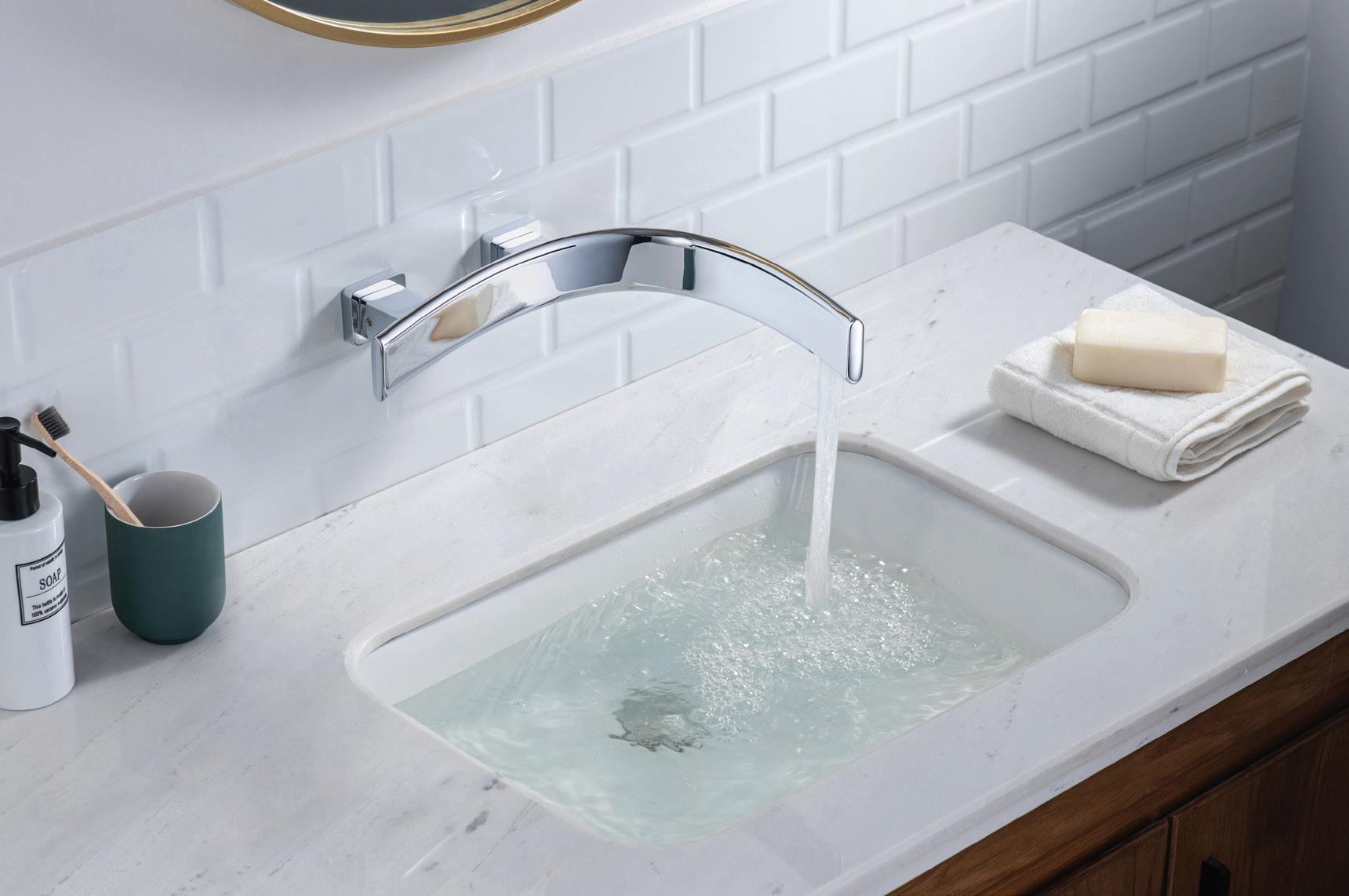
FAUCET
Great Curves
Available with hands-free sensors, the Curve is a trendy new horizontally arced faucet. Designed by renowned mechanical engineer Prakhar Kumar Jain, the sleek, elegant silhouette is simple and minimalistic. Delivering a waterfalllike flow, the Curve is available in traditional finishes like chrome, brushed nickel and matte black, and 20 ceramic-based color options.
Isenberg www.isenbergfaucets.com
CIRCLE 270 STUNNING LOOK The Curve offers left or right installation configurations and looks particularly stunning when paired over a double vanity.
TOUCHLESS+ Touchless All-In-One sink systems offer a touchless handwashing experience that also ends soap and towel waste and eliminates water splashing on users or dripping on the floor.
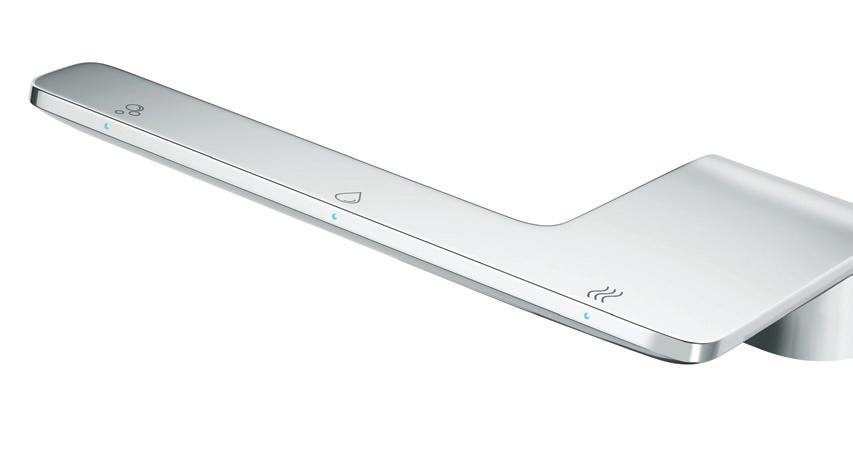

FAUCET, SOAP, AND DRYER
Step Up to the Bar
Winner of a 2020 GOOD DESIGN award from the Chicago Athenaeum: Museum of Architecture and Design and the European Centre for Architecture Art Design and Urban Studies, the Next Generation WashBar features Bradley Corp.’s advanced touchless clean+rinse+dry technology. A thin, L-shaped design makes the fixture feel as if it is floating above the sink. The touch-free soap, water and dryer bar incorporates LED-illuminated icons to navigate the user through the handwashing process.
Bradley Corp www.bradleycorp.com
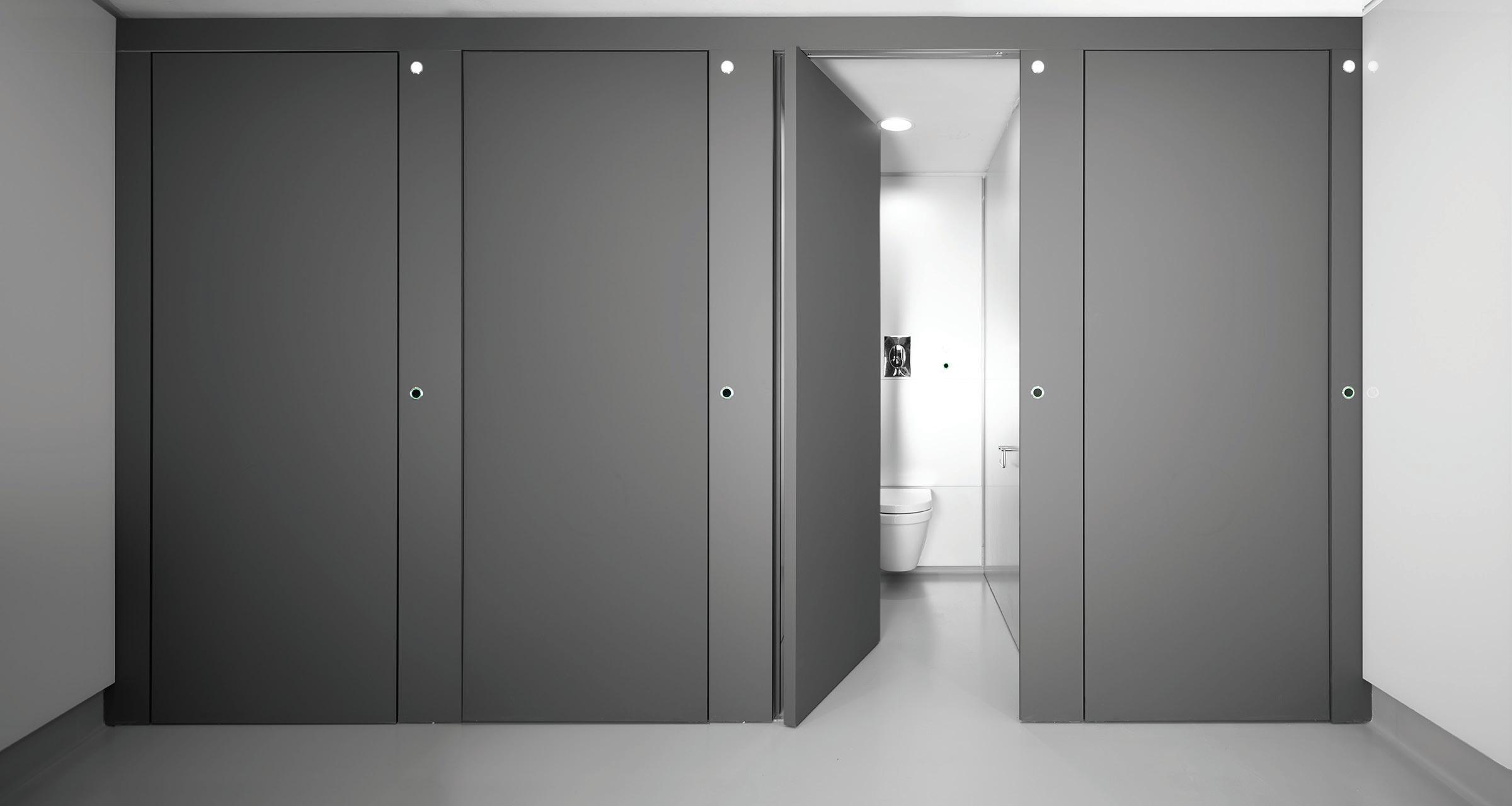
DOOR SENSORS The sensors activate upon a user’s approach. In the event of a power failure, the system automatically disengages to allow manual opening.
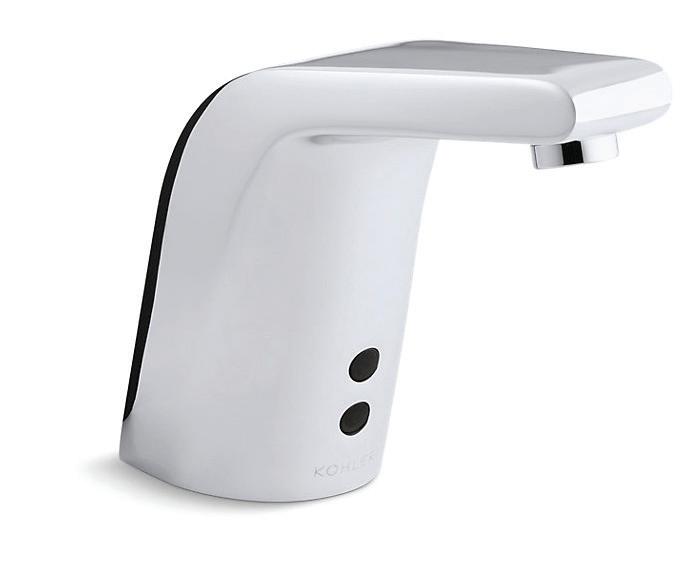
FAUCET
Intelligent Sensor
Featuring Insight technology, Kohler’s Sculpted Touchless faucet’s infrared sensor gathers and analyzes the surrounding area upon installation. The intelligence is then calibrated to filter false triggers and optimize sensor operation. Available at a low 0.5 gallons per minute flow rate, the faucet incorporates a vandal-resistant aerator.
Kohler www.us.kohler.com

DRYER
On the Spot Dryer
With the ability to dry one’s hands without leaving the sink, the XLERATORsync from Excel Dryer delivers a 14-second dry time with adjustable speed, heat, and sound control. With 95% cost savings vs. paper towels, and using 80% less energy than conventional hand dryers, the touchless hygienic hand drying solution is more sustainable too.
Excel Dryer www.exceldryer.com
TOILET
Touchless Toilet Cubicle
A best of NeoCon Silver Award for Architectural Products in the Interior Products and Solutions Category, Bobrick’s Thrislington Touchless Toilet Cubicle is a fully integrated access system with door control from both the exterior and interior via hand proximity sensors. Located on the fascia/pilaster between cubicle doors, the sensors activate upon a user’s approach with an electromagnetic locking system. In the event of a power failure, the system automatically disengages to allow for manual door opening.
Bobrick Washroom Equipment www.thrislingtoncubicles.com
CIRCLE 266
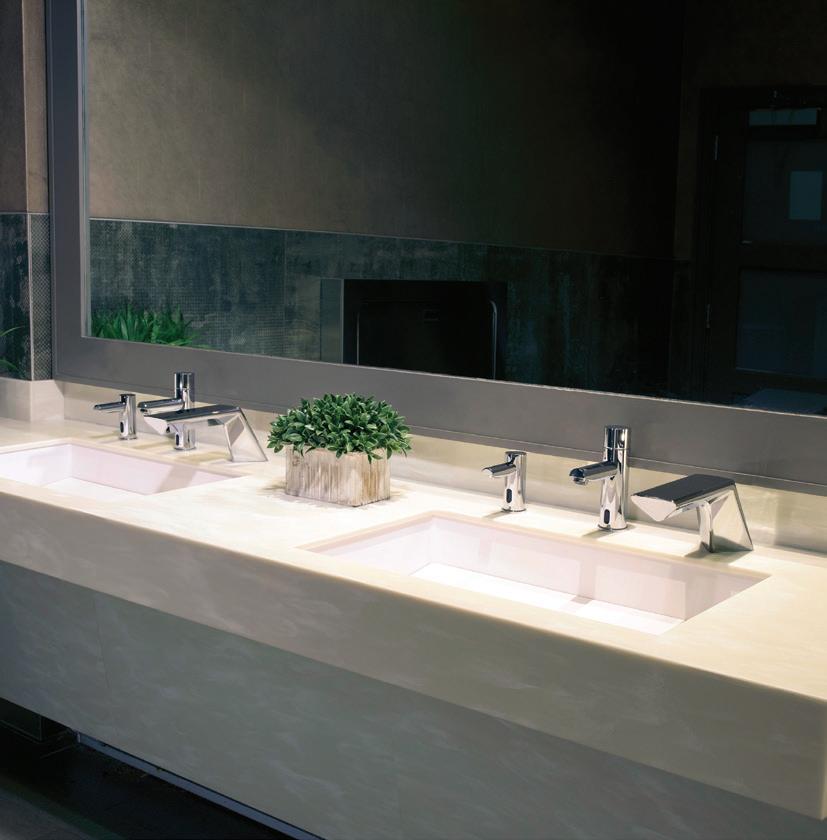
OFFICE
The Ultimate Desking Solution
The HELM office table from HALCON earned itself a Best of Competition 2022 award and a Gold distinction in both the Tables: Height-Adjustable and Tables: Conference categories at NEOCON.
“This groundbreaking table has a professional and high-end feel while also meeting current user demands and expectations for wellness. It is seamless and well-executed in all ways,” stated the NEOCON awards jury.
In creating this award-winning desk, German designers Markus Jehs and Jürgen Laub worked to strip down the height-adjustable mechanism to deliver a sleek solution.
“The mission of HELM was to design heightadjustable meeting tables that appear weightless,” they explained. “The technical conditions
are extremely difficult, and with most solutions the work is carried out with lifting columns that reach down to the ground. We wanted exactly the opposite: an elegant, light, and filigree structure that carries the column.”
It seems that they succeeded as Joe Lozowski, CEO of the Santa Fe Springs, Calif.-based Tangram Interiors wrote in a recent blog, “this is the most elegant height-adjustable executive desk that I’ve ever seen. I love the classic design aesthetic.”
Although it may have classic lines, the functionality is cutting edge. The desk surface, which can be rectangular or oval-shaped, doubles as a wireless charging station and offers USB-C connectivity.
To match the office décor, specifiers can choose from a variety of light, medium, and dark wood species including maple, cherry, walnut, oak, sycamore, ash, and hickory. Metal options include chrome, black, and bronze, and the glass selection can be back painted in white, gray, silver, or black. The table surface is also available in a proprietary material made from acrylic resins.
To visualize the different options, architects can tap into HALCON’S online configurator tool. In selecting the shape, size, surface finish, subtop finish, base finish, and accessory options, designers can mix and match options to create the best solution for the space they are designing.
Halcon Helm www.halconfurniture.com
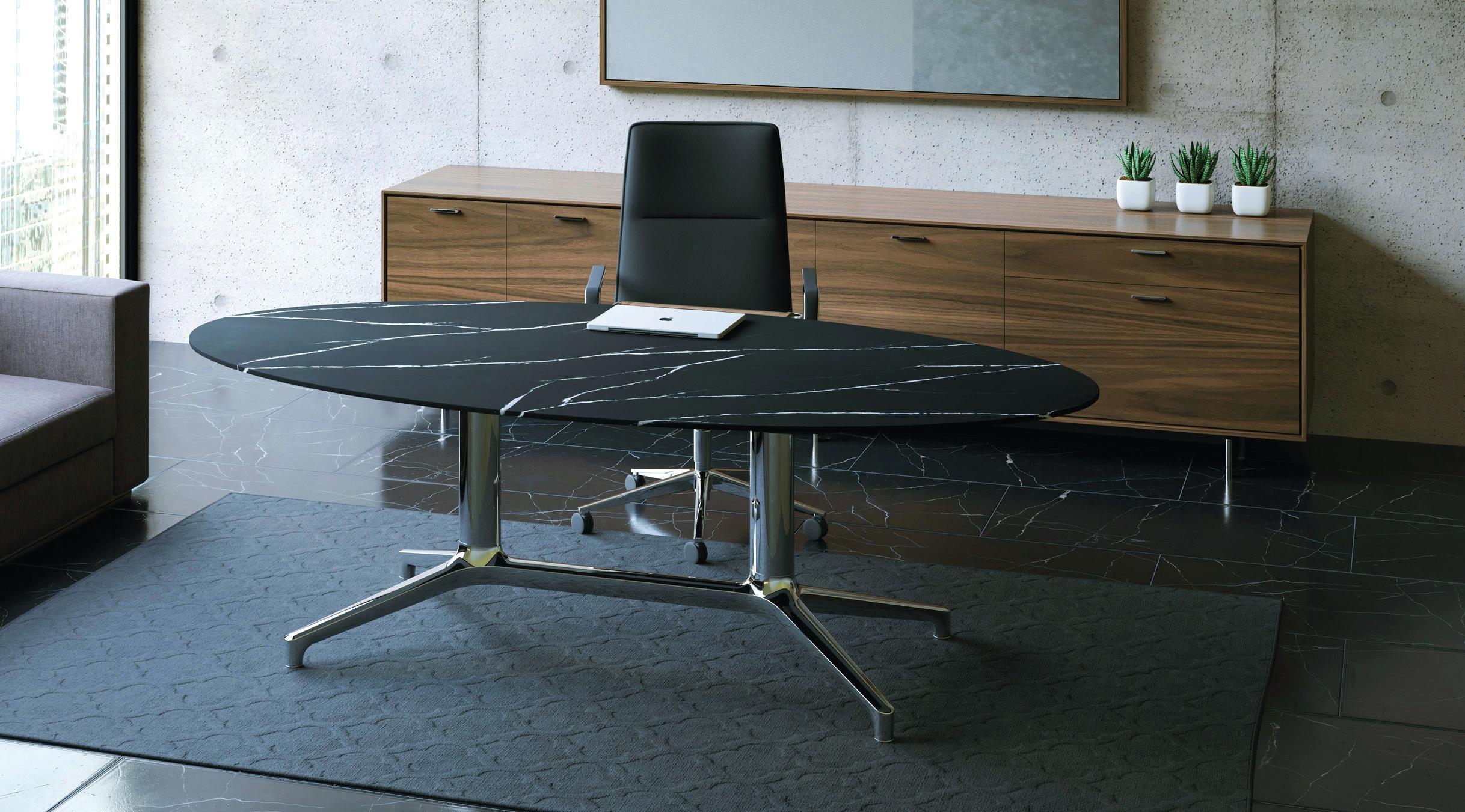
© HALCON
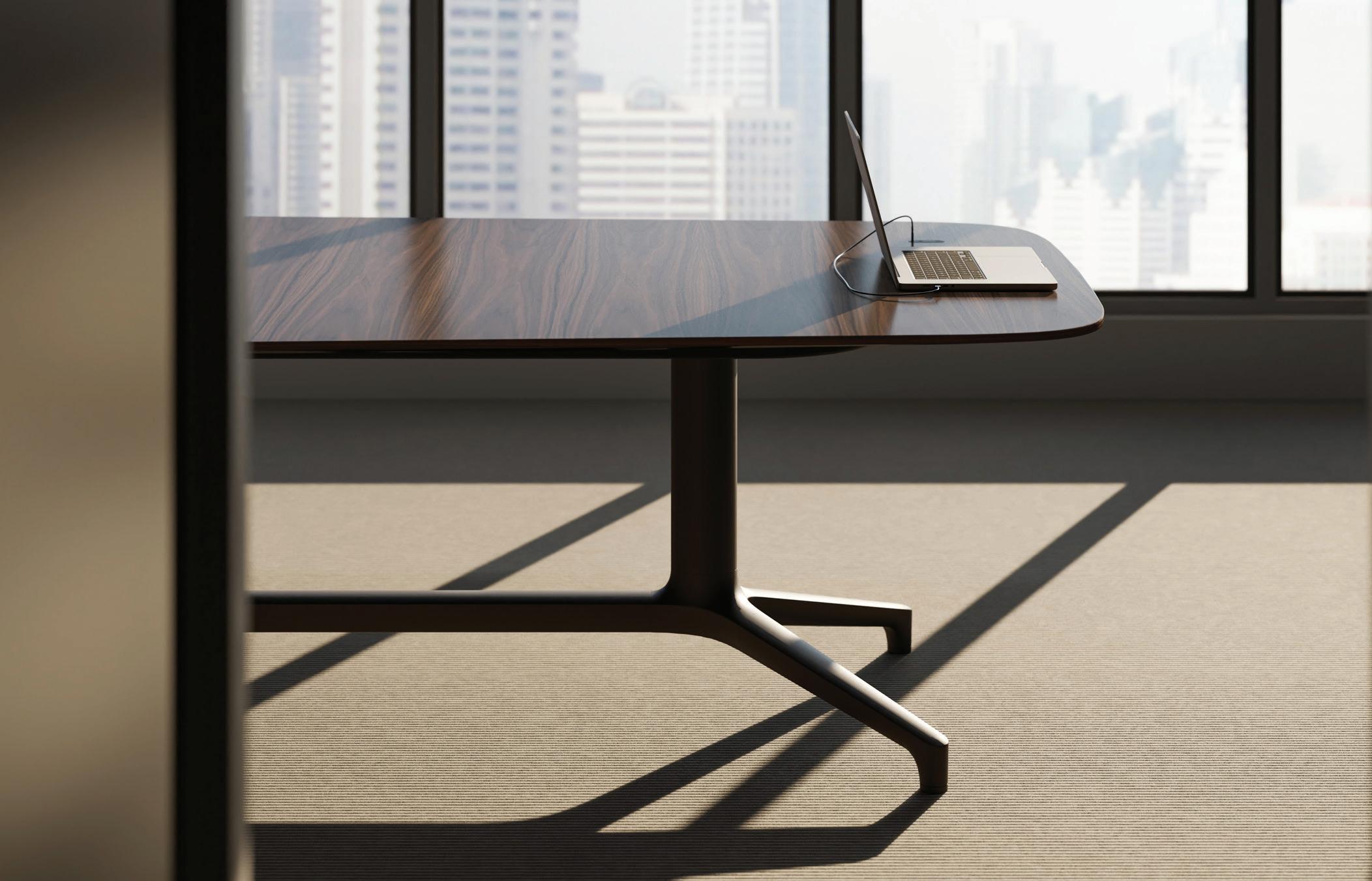
BUILT-IN TECH The desking solution offers seamless cable management and connectivity. It also features an integrated valet drawer.
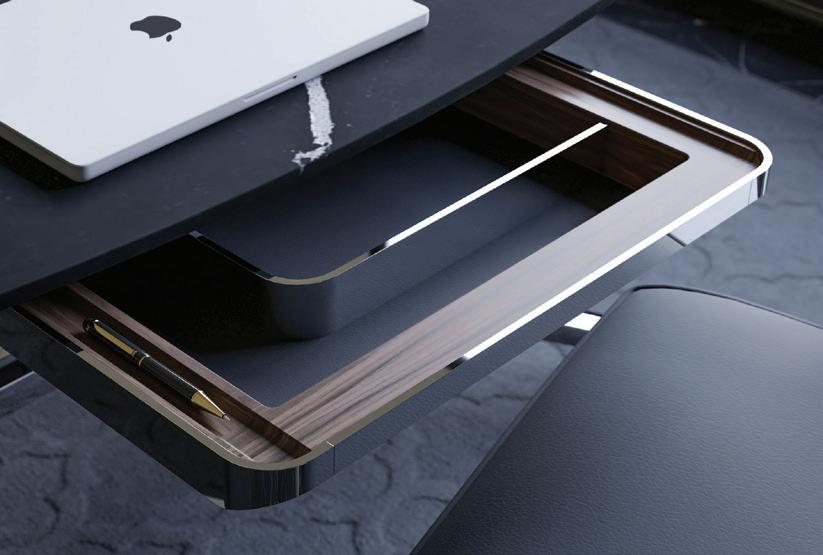
AWARD WINNERS
LightFair Innovation Awards Round-Up
New forms and functionalities address several market needs and offer designers new creative possibilities.
This year’s LightFair Innovation Awards did not disappoint. Selecting from the vast away of products on display at the Las Vegas Convention Center, an independent panel of judges from the Illuminating Engineering Society and the International Association of Lighting Designers selected the most innovative products in 14 categories.
“Our 2022 LIA winners continue to pave the path for lighting innovation,” said Dan Darby, LightFair show director. “This year’s winners took innovation to the next level and created products that not only serve an important purpose in lighting, but also demonstrate exceptional design capabilities and outside-of-the-box thinking.”
Joining this year’s independent panel of lighting professionals was Lane Swainston, Swainston Consulting Group and Javid Butler, senior engineer, HDR Consulting on behalf of IES and Ellen Kuklinski, director of architectural design, Coherent Design and George Huang, senior lighting designer, Steelman Partners for IALD.
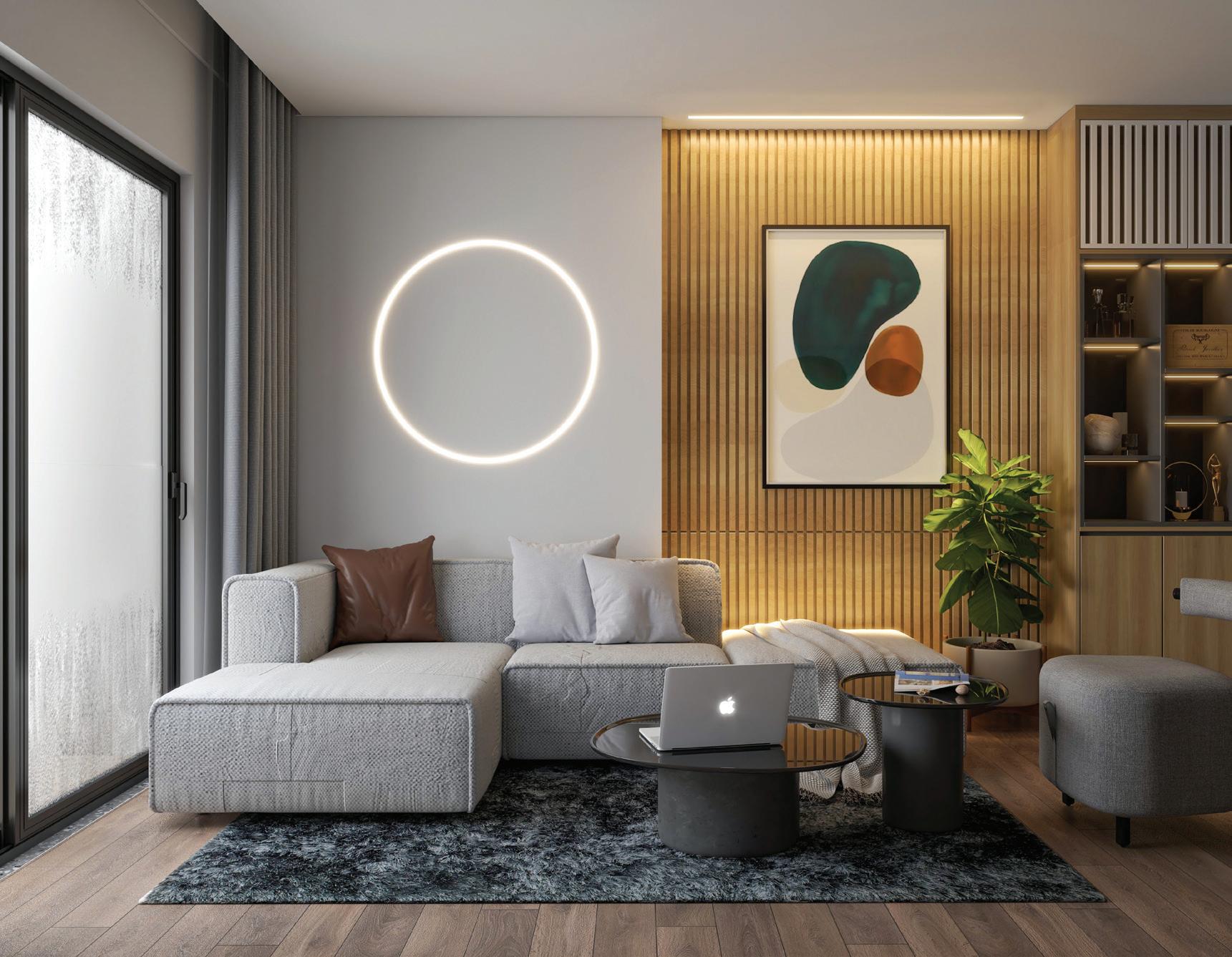
The Circle of Light
Combining an RGB strip with a tunable white strip, the TruCirque is an illuminated circle that recesses into 5/8-in. drywall. Earning a LightFair Innovation Award in the Dynamic Color, Theatrical, Cove, Strips & Tape category, the product seamlessly blends into the drywall with no joist modification required. Building occupants can set the glowing circle to display as white, red, green or blue for a modern, dynamic appearance.
PureEdge Lighting TruCirque www.pure-lighting.com
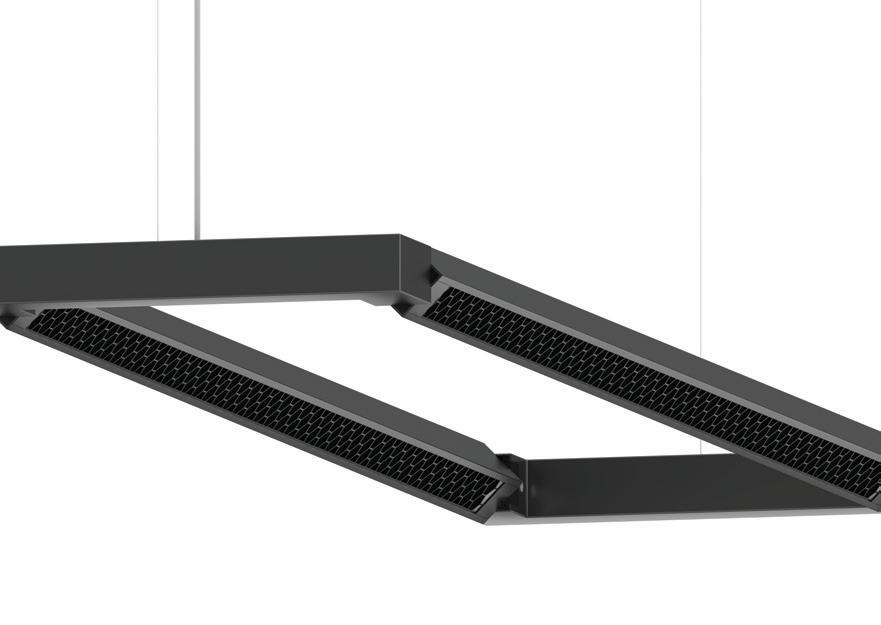
Imaginative Illumination
Earning both a Design Excellence and Commercial Indoor: Troffers, Suspended & Surface Mounted award, this modular linear lighting system incorporates a quick connector for an easy install in any configuration. Easy-Link’s linear sections can be assembled with T, X, and U connectors, and a rotating socket allows the luminaire to be set at any angle. The system can be suspended, mounted on walls or ceilings, or attached to a table or floor, and honeycomb or louvered baffles can be added to reduce glare.
Edison Price Lighting Easy-Link www.epl.com
CIRCLE 263

In Case of Emergency…
Picking up the award in this year’s Ballasts, Transformers, Drivers, Systems & Kits category is Keystone’s Constant Wattage LED Emergency Backup Driver. With an operating temperature as low as -4°F, the robust driver runs LED loads at 5 watts and 12 watts for a minimum of 90 minutes and comes in a variety of form factors. With options designed to fit almost all commercial fixture types—including linear, high bay, recessed and integrated fixtures— the driver also incorporates short circuit overload and open load protections.
Keystone Technologies Smart Safe LED www.keystonetech.com
LIGHTFAIR INNOVATION AWARDS CONTINUED

Design Your Own Fixture
Taking top honors as this year’s most innovative LightFair product in addition to an Indoor Decorative award, the MIFOR-70 is a highly flexible luminaire capable of replicating just about any shape a designer creates. Named a Top 10 Must See LightFair 2022 product in the EdisonReport, the system can create polygonal, bent and undulating light designs to display a luminous line, plane or circles. The modules can be connected into strings and multiplying shapes and suspended on wires connected to the ceiling.
Klus MIFOR-70 www.klusdesign.com
CIRCLE 261
Draw a shape. KLUS will transform it into a luminaire with MIFOR-70.
Top Post Honors
Featuring an innovative clamping mechanism, multiple luminaires can be mounted at any height or point within a full radius on a single pole, with no visible hardware. Available as top post luminaires, wall mounts or a bollard, the outdoor lighting product delivers an elegant, minimalist appearance. Available with performance optics or low-glare, edge-lit comfort LED panels, the luminaires integrate seamlessly with occupancy and photo controls.
ANP Lighting SiteLine www.anplighting.com

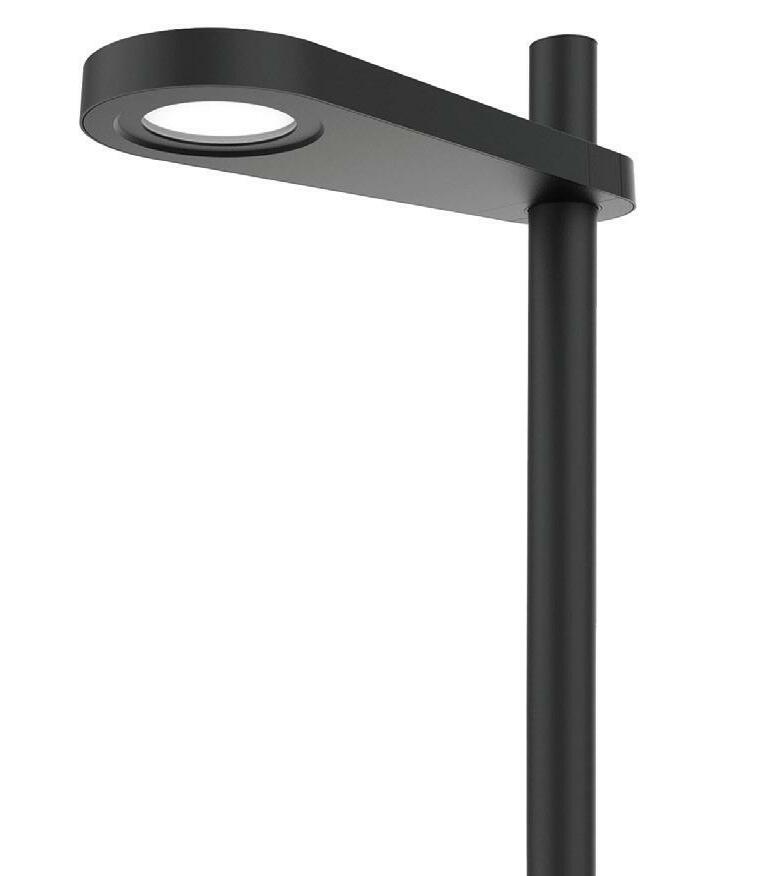
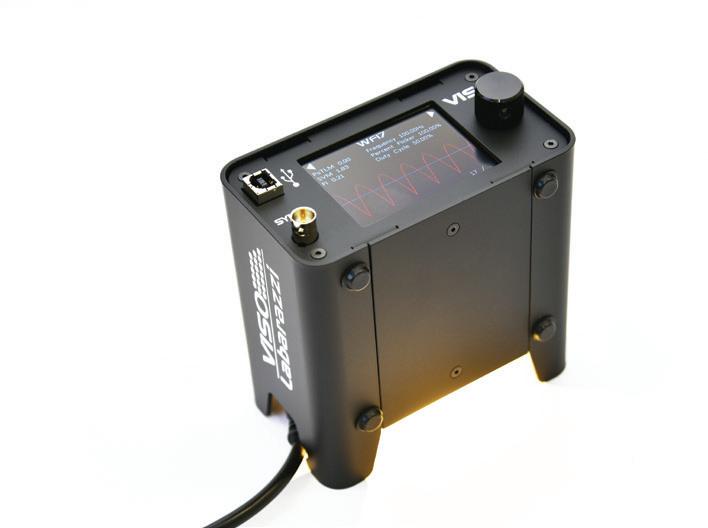
High-Quality Flicker
As the only commercially available temporal light artifacts (TLA) flicker generator in the industry, the Labarazzi is designed with 26 preset flicker signals or users can design their own by navigating through settings for waveform, frequency, flicker percent, duty cycle, modulation depth, PstLM and SVM. Winning the Non-Luminous: Research, Publications, Lighting Software & Specialty Hardware Lightfair category award, the flickering light can be used for testing, demonstration and educational purposes.
Viso Systems Labarazzi www.visosystems.com
Better Buildings. Healthier People.
The WELL Health-Safety Rating has 2.8 billion square feet served and counting.
By Jeff Pitts, contributing writer
“The WELL Health-Safety Rating is serving as a roadmap for organizations globally to improve human health through enhanced operational policies, maintenance protocols and emergency plans. As part of this commitment to creating people-first places, architects and designers are also being called upon to help their clients create a culture of health,” said Jessica Cooper, Chief Commercial Officer at the International WELL Building Institute. “As agents of public health, architects can utilize their expertise to create impacts beyond design and inform how spaces are maintained in the long-term.”
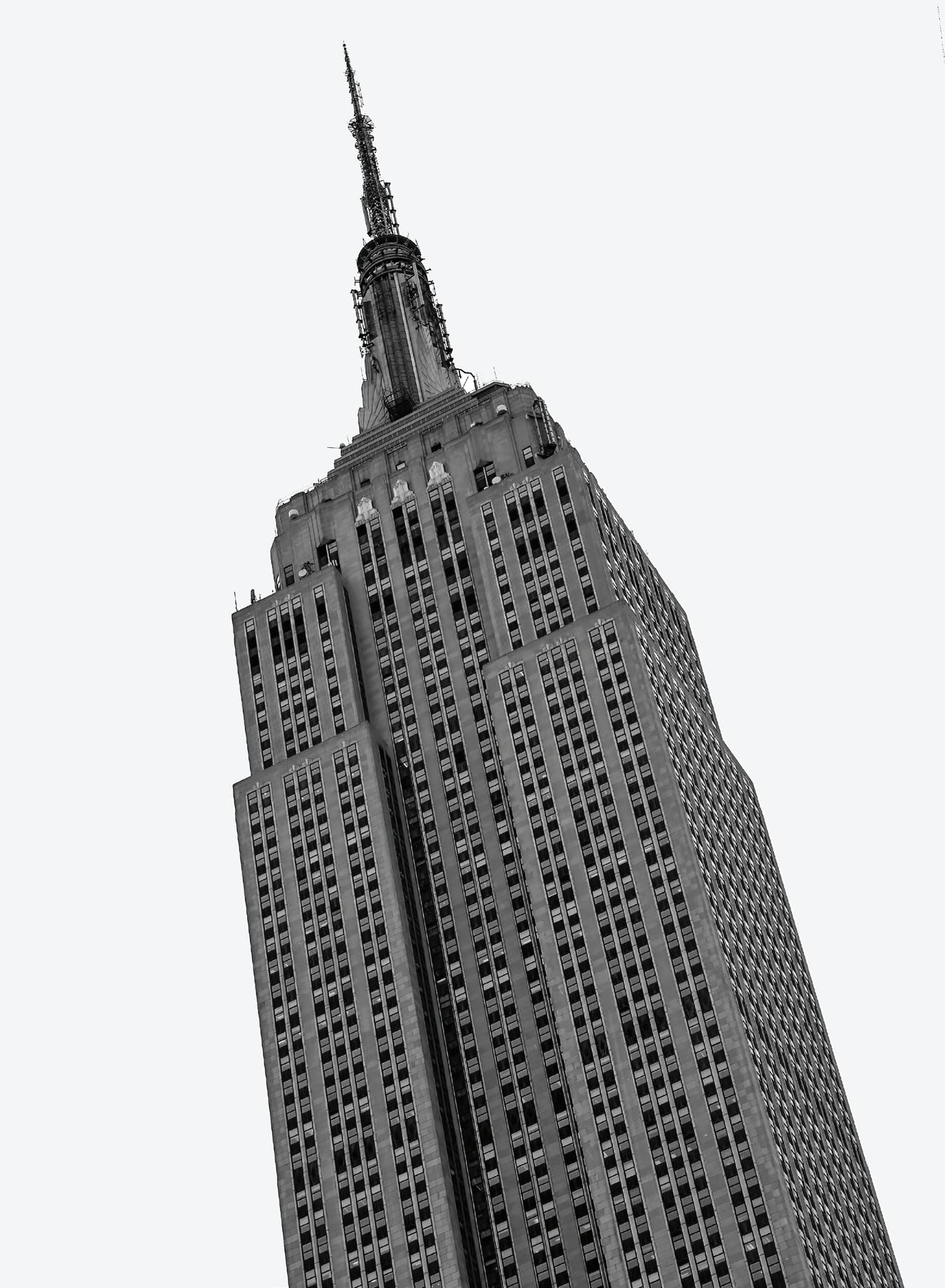
NY WELLNESS The Empire State Building is part of the Empire State Realty Trust, which was one of the very first portfolios that achieved the WELL Health-Safety Rating.
Billed as “the world’s first building standard to focus on enhancing people’s health and wellbeing through the built environment,” the International WELL Building Institute (IWBI) launched its signature program back in 2014. After four short years, this program, known as the WELL Building Standard (WELL)—a performance-based certification system that marries best practices in design and construction with evidence-based medical and scientific research—was flourishing. It had been utilized in 250 million sq. ft. of built space, including offices, schools, corporate buildings, hotels and residences, and it picked up even more steam the following year, when its usership doubled to top the 500-million-sq.-ft. mark. But then along came COVID-19.
“Prior to COVID, we had about half a billion square feet that had engaged with WELL,” explains Jessica Cooper, who serves as Chief Commercial Officer at the institute. “We are now at 3.5 billion square feet of WELL projects around the globe. We had 465 projects in 2017, now we’re at 35,000 projects.”

The steep uptick in demand for the institute’s services certainly extended beyond COVID, notes Cooper.
“We already saw strong growth in full-certification enrollment before the pandemic, but COVID clearly contributed to the institute’s exponential growth.”
The pandemic instilled a sense of urgency in companies to prioritize health, and IWBI responded. Pivoting away from having its sole focus be on its comprehensive WELL Certification, the institute began offering more flexible pathways that break down the WELL Building Standard into moremanageable, bite-size chunks. One such incremental approach was the WELL HealthSafety Rating for Facility Operations and Management—a set of features focusing on maintenance protocols, stakeholder engagement and emergency plans to address health and safety needs and to help businesses thrive.
The WELL HealthSafety Seal has now been adhered to the front doors of Yankee Stadium, Miami’s City Hall, more than 600 senior living communities, thousands of Planet Fitness clubs and a vast array of other built spaces. Most industry insiders have long been aware of the WELL Building Standard and its comprehensive certification, but the almost-overnight spread of the new WELL Health-Safety Seal—it’s now in more than 100 countries at nearly 24,000 locations across 2.8 billion square feet of space—has people asking: “What exactly is that?” “Transmission of COVID-19 has been found to largely occur in indoor and enclosed environments, where people spend approximately 90% of their time.”
—International WELL Building Institute
WELL HEALTH-SAFETY RATING
The WELL Health-Safety Rating is an evidencebased, third-party verified rating focused on operational policies, maintenance protocols, emergency plans, and stakeholder education and engagement to address a post-COVID-19 environment now and broader health and safetyrelated issues into the future.
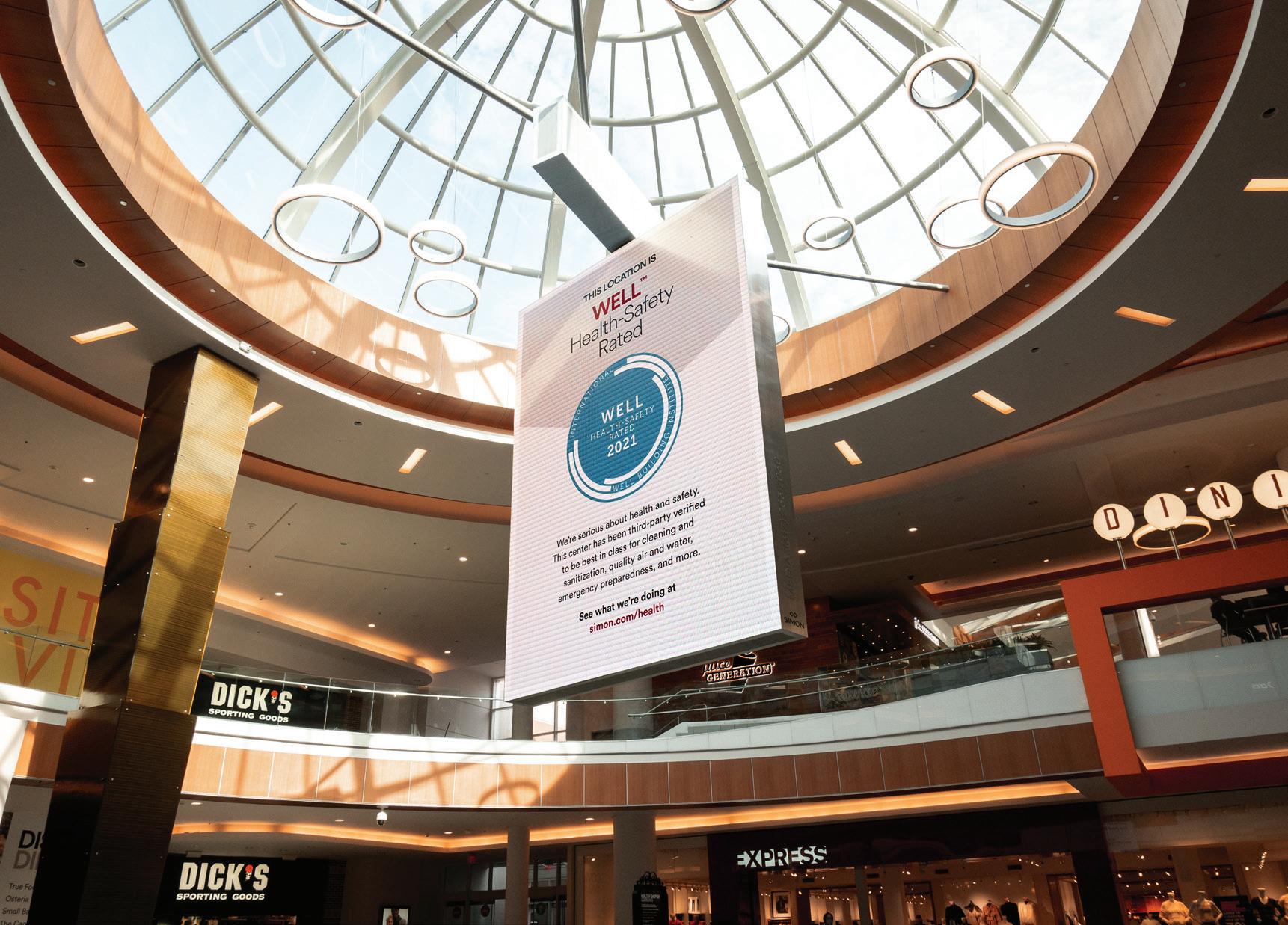

SCOPE OF WELL HEALTH-SAFETY RATING
OPERATIONAL POLICIES
Adoption of polices and procedures to facilitate a healthy and safe workplace or facility.
MAINTENANCE PROTOCOLS
Implementation of facilities management and maintenance protocols designed to reduce the risk of infectious disease transmission.
EMERGENCY PLANS
Development of emergency plans and protocols, that, when applied, help to safeguard building users.
STAKEHOLDER EDUCATION AND ENGAGEMENT Regular communications, educations, and signage that capture important updates, activities, and information.
What Exactly is the WELL Health-Safety Rating?
The WELL Health-Safety Rating “addresses a range of acute health threats through facilities’ operations and management strategies, in order to help organizations meet immediate COVID-19 needs and to prioritize long-term health and safety of staff, visitors and stakeholders.” Its strategies were informed by existing features within the WELL Building Standard—as well as IWBI’s Task Force on COVID-19 and guidance by WHO, CDC, global disease control and prevention centers, emergency management agencies, and an array of other experts and institutions—but the rating differs from the WELL Building Standard in some important ways.
For one, the WELL Health-Safety Rating primarily targets relevant acute health threats, including infectious diseases and COVID-19. The rating is designed to be deployed quickly and without major expenditures. In contrast, the WELL Building Standard addresses a larger, more comprehensive set of strategies.
Further, the WELL Health-Safety Rating is entirely documentation-based and does not require on-site performance testing, whereas the WELL Building Standard does require on-site performance tests. While some WELL Health-Safety Rating features call for the submission of air and water monitoring, there are no specific performance outcomes. So while performance testing remains a critical differentiator in regard to the WELL Certification, it is not required to achieve the WELL Health-Safety Rating.
To earn the WELL Health-Safety Rating, projects must achieve some combination of 15 of the rating’s 23 evidence-based features. These are customizable and adaptable to a specific facility and organizational needs and no single feature is mandatory. Each project is encouraged to improve on areas of need. The features fall within the following categories:
1. Cleaning and Sanitization Procedures 2. Emergency Preparedness Programs 3. Health Service Resources 4. Air and Water Quality Management 5. Stakeholder Engagement and Communication
Upon completion of the necessary requirements, the building officially earns the distinction: “WELL Health-Safety Rated” and the seal is awarded. Valid for one year, the rating needs to be renewed annually to confirm that the project’s policies, protocols and plans continue in place.
Finally, the WELL Health-Safety Rating and the corresponding seal indicates the space puts the health of people first, while communicating that evidence-based measures and best practices for safety have been adopted and third-party verified. In other words, as the institute says on its website, “the WELL seal outside means you can feel safer inside.” For more information about WELL Health-Safety Rating, visit www.wellcertified.com/health-safety.

WELL HEALTH-SAFETY RATING PROJECT: AIMBRIDGE HOSPITALITY-SHERATON SUITES COUNTRY CLUB PLAZA, KANSAS CITY
Approximately 200 of Aimbridge Hospitality’s North American properties have achieved the WELL Health-Safety Rating. Sheraton Suites Country Club Plaza in Kansas City is one such hotel. Marriott’s “Commitment to Clean” touts an array of measures to combat germs, including the treatment of surfaces with hospital-grade disinfectants, enhanced cleaning technologies such as electrostatic sprayers, and the use of air-purifying systems that fight against viruses in the air and on surfaces. In addition, Marriott Bonvoy members have access to an array of services through the Marriott Bonvoy App, including contactless options for mobile check-in/check-out, mobile keys to forgo the front desk and mobile dining options.
WELL Health-Safety Rating Projects
Brightline Transit
All aboard! Brightline is billed as America’s only provider of modern, eco-friendly, higher speed rail. The service launched in 2018 in South Florida with the aim of removing cars from the road by offering a better option—Brightline. Current fullservice offerings include travel between Miami, Fort Lauderdale and West Palm Beach, Fla. Brightline became the first train company in the world to earn the WELL Heath-Safety Rating this past April—announced on Earth Day—and it was an easy decision, according to Denaye Hinds, Brightline’s Sustainability Director, since this is “essentially a hotel room on wheels.”
Brightline trainsets boast a well-thought out design with two locomotives, one on each end, so that the trains don’t need to “turn around.” Also, the modular locomotives allow for the easy replacement of every major component. Even though the business was built pre-COVID, some of its inputs were already in alignment with achieving the WELL Health-Safety Rating. Implementing air quality measures as well as different cleaning and sanitization procedures were two big themes in Brightline’s achievement of the WELL Health-Safety Rating. Air quality was aided by continuous virus, pathogen, and air quality treatment supported by Siemens Technology. Cleaning and sanitation modifications included the utilization of cleaning products with less hazardous ingredients in an effort to reduce the risk of respiratory and dermal symptoms of teammates and guests. Brightline also features touchless hygiene, including a touchless flush toilet and a Dyson faucet.
Cleaning and sanitation protocols include the consideration of employees’ health and efforts to reduce the risk of respiratory and dermal symptoms.

© Brightline via International WELL Building Institute

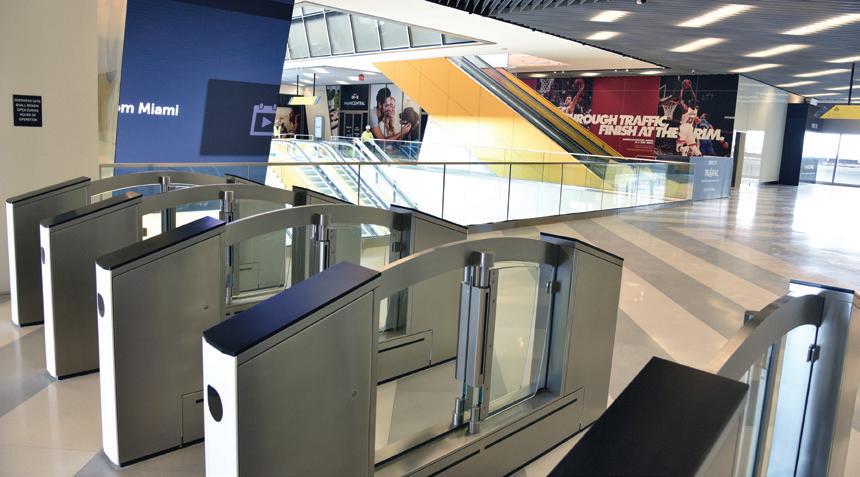
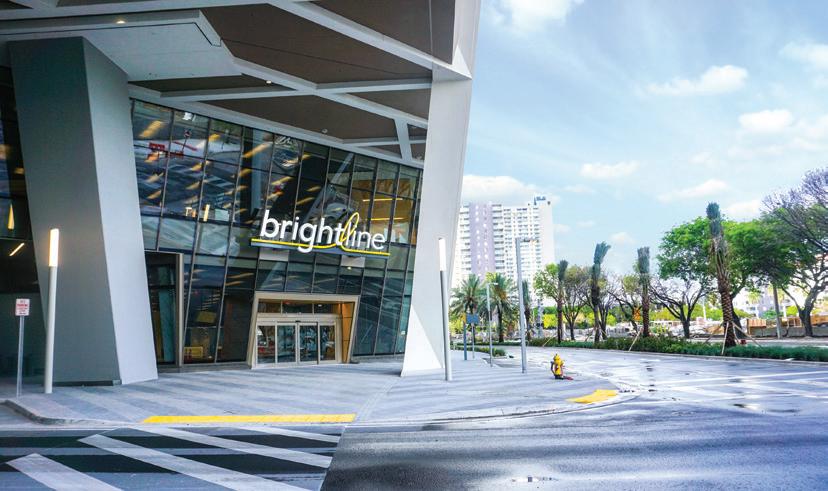

The first sports and entertainment venue to achieve the WELL Health-Safety Rating is Yankee Stadium.
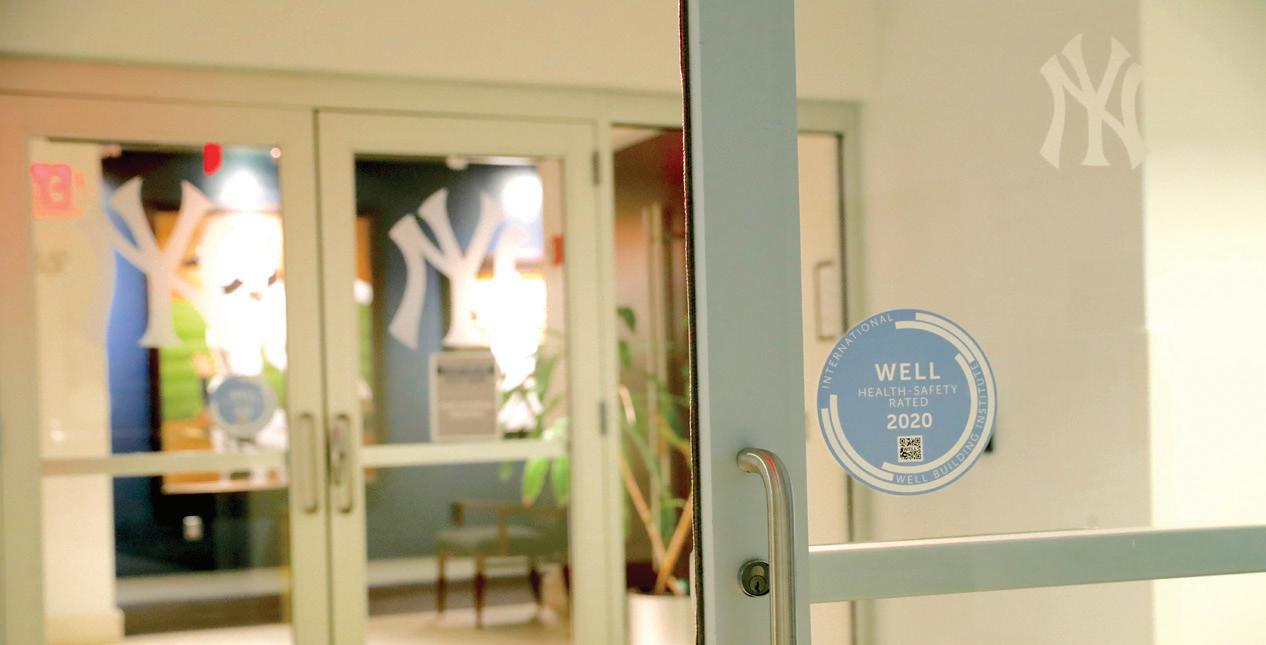
Yankee Stadium
Yankee Stadium, home of the New York Yankees, became the first sports and entertainment venue to achieve the WELL Health-Safety Rating. The famous ballpark did so in part by way of its commitment to air and water quality management, cleaning and sanitization procedures, emergency preparedness programs, and health service resources, among other things.
Health-Safety-Supporting Products
The International WELL Building Institute does not endorse products. The following products are examples of the types of tools and materials that could potentially be utilized within the quest to achieve the HealthSafety recognition by the International WELL Building Institute.
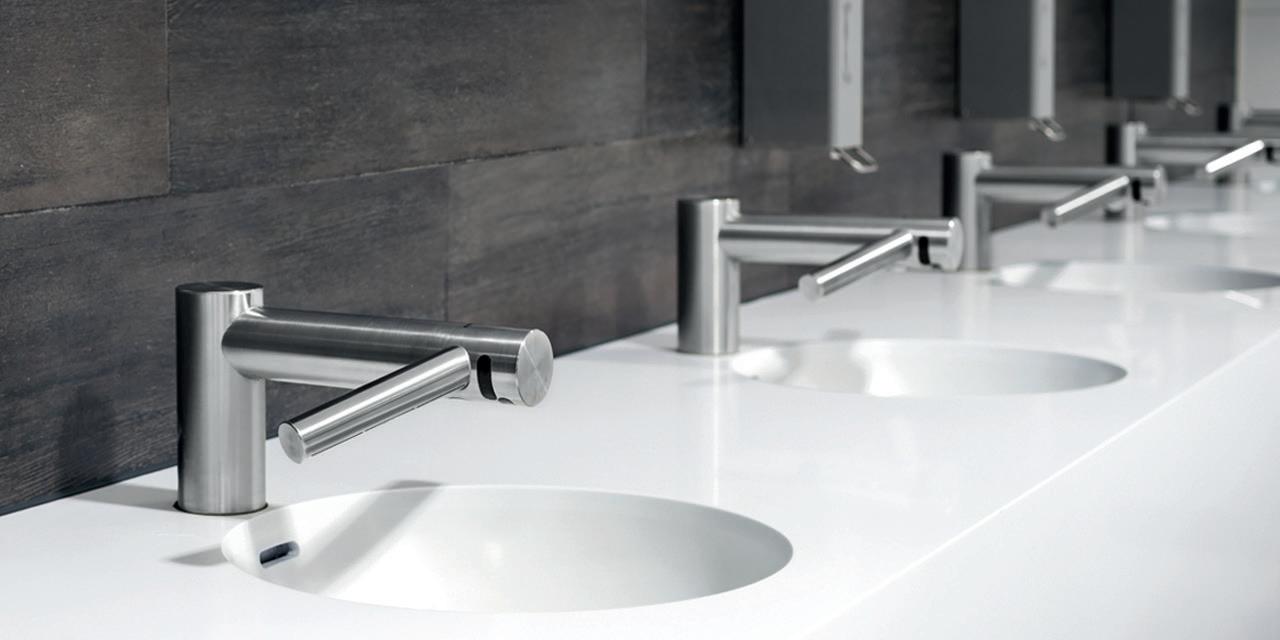
Air-Quality Products
Air-filtration devices, air-cleaning apparatuses, airquality monitors and other such options give facility managers and occupants the tools and data that are needed to optimize indoor air spaces.
BREATHING EASIER Indoor air quality protection is a key consideration to any space that aims to protect occupants from airborne illness. Siemens needlepoint bipolar ionization uses both positive and negative ions that are forced through the HVAC system or portable units and are capable of attacking and deactivating certain bacteria, pathogens, airborne particles and VOC. Siemens Needlepoint Bipolar Ionization www.siemens.com
CIRCLE 258
Bathroom Innovations
When talking about stemming the spread of germs inside a building, the bathroom is, of course, an important area to consider and touchless is a key criteria.
TOUCHLESS AND NO MESS The Dyson Airblade allows people to wash and dry their hands in 14 seconds all at one station—without moving to a separate hand-drying station, which eliminates waste water on the floor.
Dyson Dyson Airblade Wash + Dry www.dyson.com
CIRCLE 257
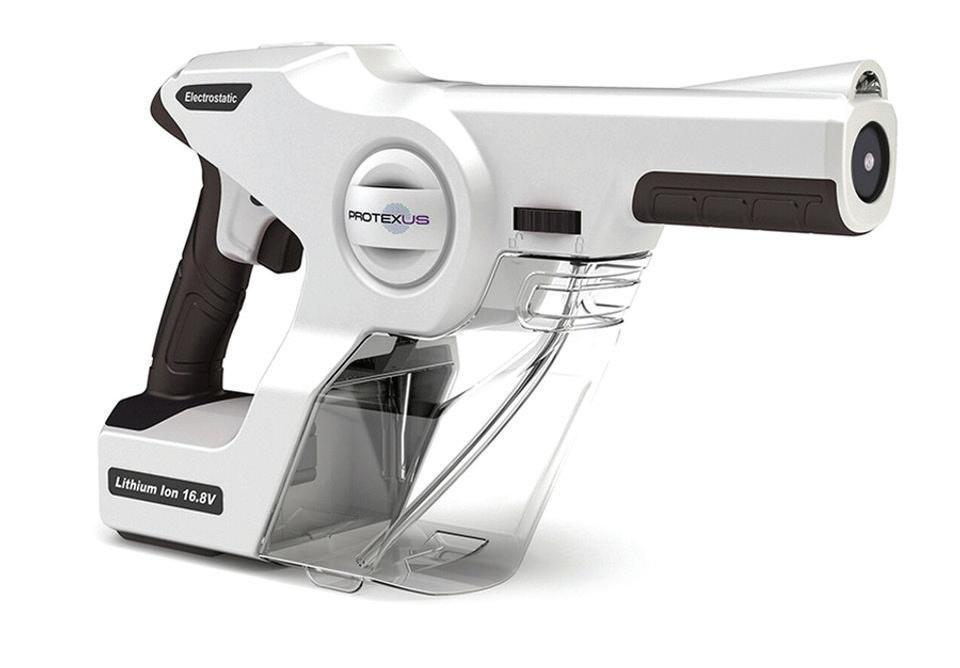
Stop Paying with Germs
Cash has frequently been found to be laden with germs. As such, a trend toward avoiding the use of physical money has emerged.
REVERSE ATM TECHNOLOGY Handling cash is expensive, time-consuming, inefficient and aids the spread of germs and contagions. As such, a completely cashless experience came to Yankee Stadium— the first sports and entertainment venue to earn the WELL Health-Safety Rating—and many other arenas around the globe as they reopened after COVID shutdowns. Thanks to technology such as ReverseATM self-service kiosks, venues can opt to only accept credit/debit cards and other touchless types of payments. For attendees with cash burning a hole in their pockets, there are on-site cashconversion ReadySTATION kiosks. These cash-to-card devices issue no-fee, prepaid debit cards; you can load as little as $1 and as much as $500 to be used within the stadium or anywhere Mastercard is accepted in the U.S.
Ready Credit Corp. Self-service cash-to-card ReadySTATION kiosks www.readycreditcorp.com
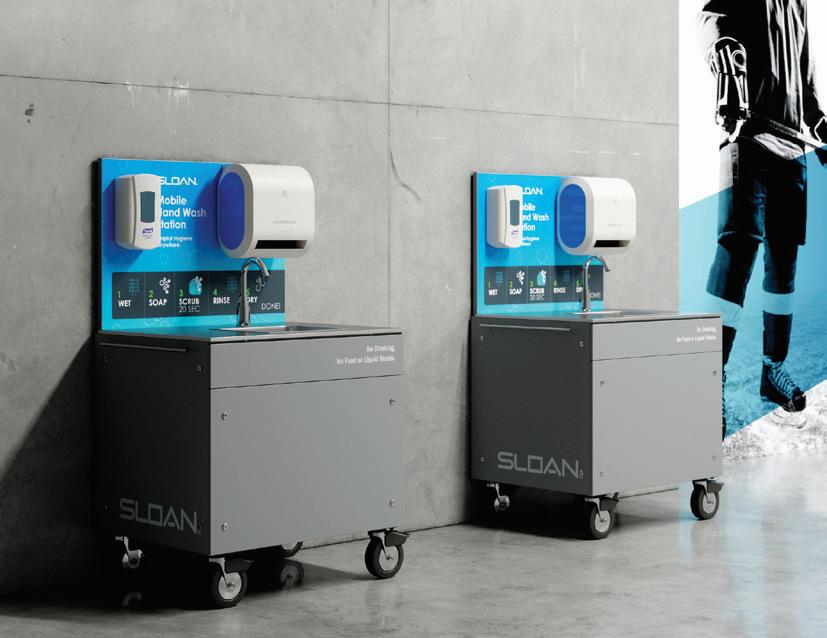
Clean and Sanitized Hands
According to some estimates, 80% of illness-causing germs are passed through people’s hands. Keeping them clean can make a difference.
FIRST-RATE MOBILE HAND FACILITY Ketchup-stained hands? Upon completion of your hot dog, Sloan’s “first of its kind, hands-free, sensor-operated, stand-alone, mobile handwashing station” will return your meathooks to a sanitized state. In this post-COVID world, the importance of hand hygiene cannot be understated, and it isn’t reserved just for the restroom anymore. These convenient cleanliness options arm facilities with a mobile, touch-free innovation that’s able to be placed anywhere in the building—it rolls on lockable caster wheels. Stations offer a sensor-operated faucet, Touchless enMotion Paper Towel Dispenser, Purell CS-8 Wall-mounted Foam Soap Dispenser, and include an AC or DC powered unit plus a 16-gallon graywater tank. Select models offer a hot water heater and holder for two 5-gallon water jugs.
Sloan Sloan Mobile Handwashing Station at Wrigley Field www.sloan.com
CIRCLE 256
Cleaning and Sanitizing Tools
If airborne illness is the enemy, the following products help you say, “Hasta la vista, viral pathogen.”
GERMICIDE This powerful tool attacks microbes and decontaminates surfaces by utilizing an electrostatic charge—perfect for gyms, such as Planet Fitness. Droplets attract to the surface—instead of floating in the air where they do little good—as the spray “wraps around” objects to achieve better coverage than traditional sprayers.
Evaclean System Protexus Backpack Electrostatic Sprayer www.evaclean.com
Jutting from the wind-swept waves of the North Sea onto the rocky coastline of Norway’s southernmost point, the Under restaurant is a dramatic visual feat of engineering that provides a one-of-a-kind underwater dining experience.
by Katy Tomasulo, contributing writer
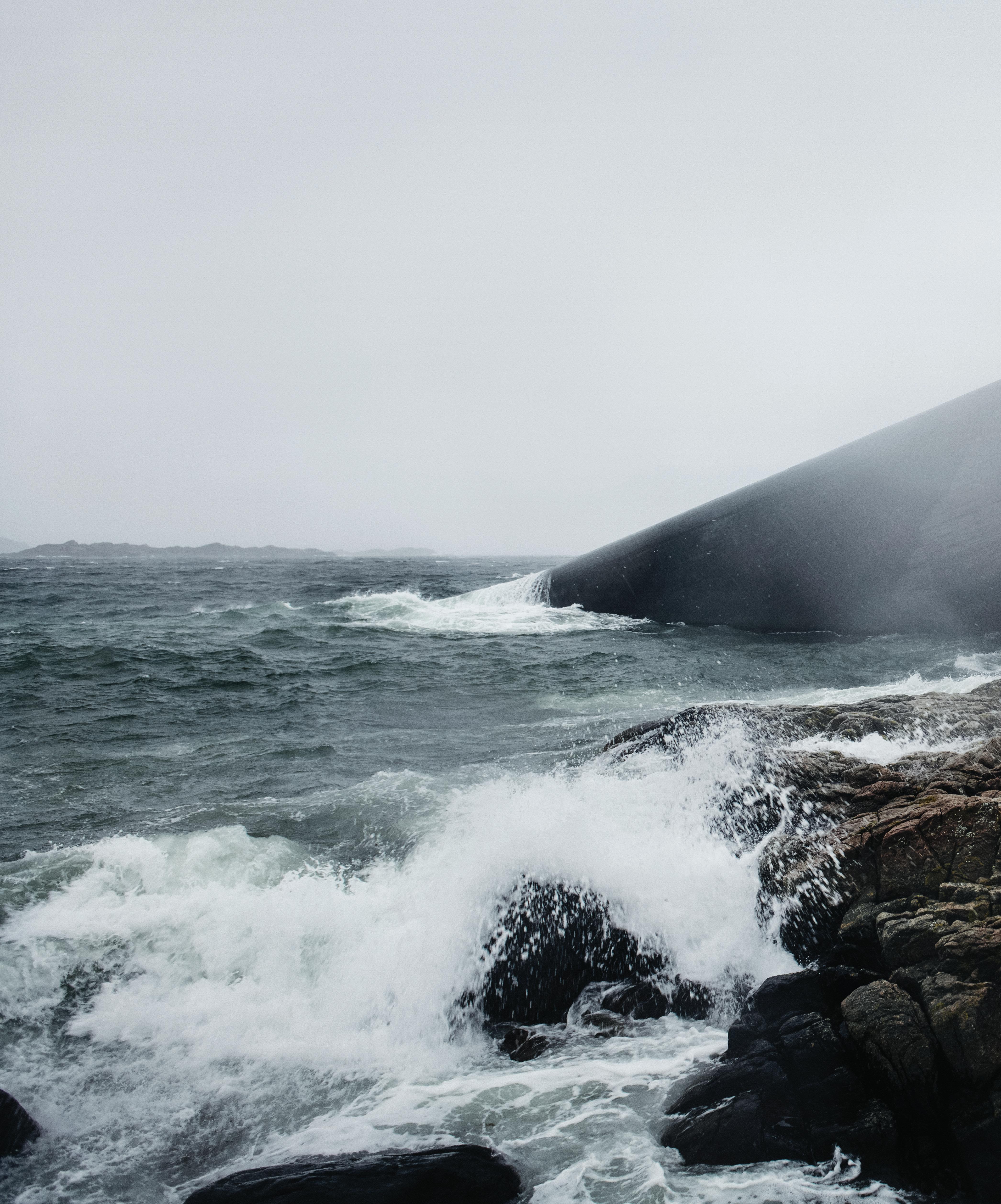
Images courtesy Snøhetta
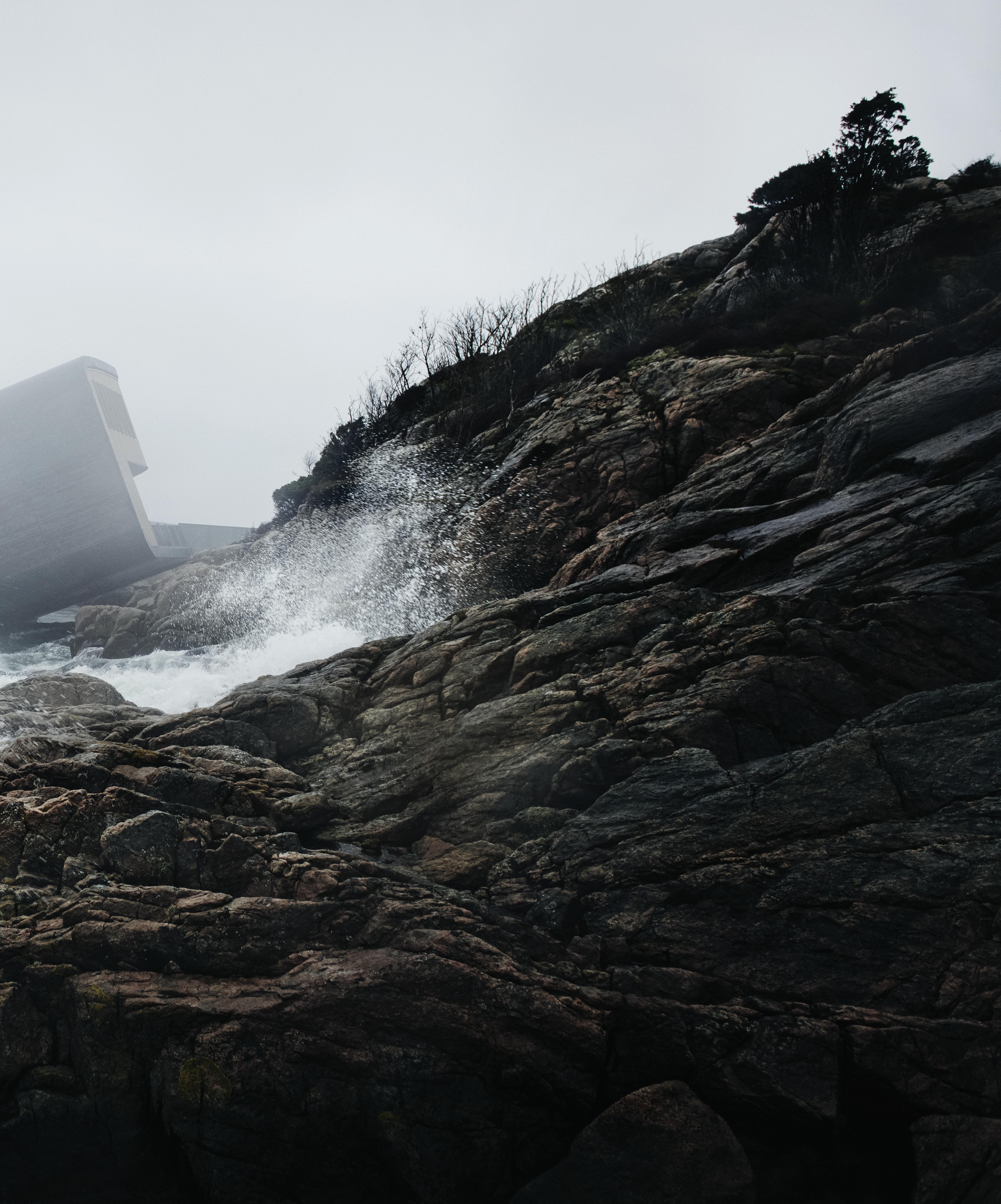

When the restaurateurs approached Snøhetta with the idea of Europe’s first underwater restaurant, the architects’ approach centered around how to bring guests from 3.5-meters above sea level to 5-meters below sea level. The solution: a 0.5-meter-thick concrete pipe that could withstand water pressure and forces from large waves, partially submerged and extending at angle from sea to surface. “Concrete has a long shelf life, and expertise and experience from the oil industry in the North Sea gave us useful insight and guidance in the process,” says Snøhetta Senior Architect Rune Grasda.
The team used 3D simulations during the design process to determine the ideal shape of the building to withstand the large waves typical of the area. A membrane—the same type used inside rock tunnels—on the inside of the concrete structure prevents small leaks. The building was constructed on a barge at sea and then towed to the property. They lowered the structure into the ocean, filling it with water, anchored it to the seabed with pre-assembled bolts, and then pumped the water out.
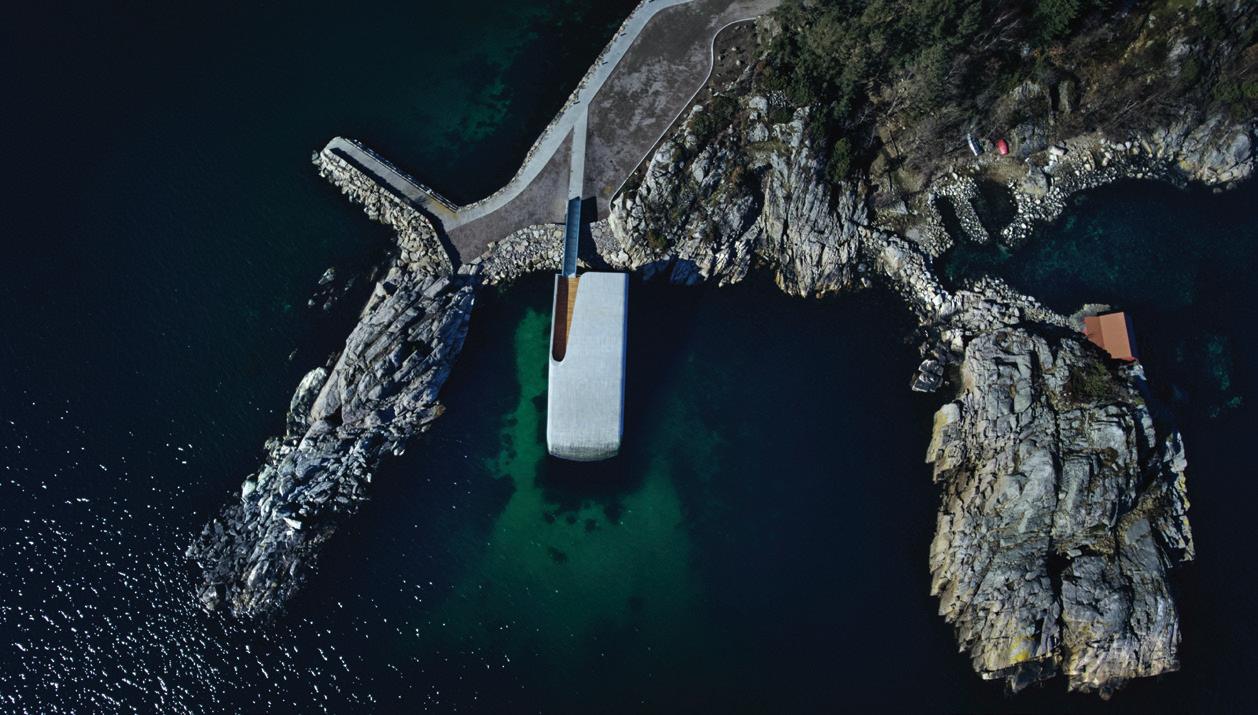

panoramic views
Designed as a sunken periscope, a 36 ft. × 13-ft. panoramic acrylic window offers diners breathtaking views of the marine ecosystem in the North Atlantic Ocean. “Acrylic is heat insulating and has very good properties for light transmission and clarity,” Grasda says. “The sealant is the same material that’s being used in large aquariums. The pressure of the water itself helps to seal the glass against the concrete structure.”
ACRYLIC WINDOWS “Reynolds Polymer Technology was able to take a uniquely complex project and engineer an acrylic masterpiece that could not only withstand the rugged undersea conditions and incredible water pressure but provide a once in a lifetime perspective and experience for our diners,” said Stig Ubostad, cofounder of Under. 36-ft. wide × 13-ft. tall × almost 10-in. thick window.
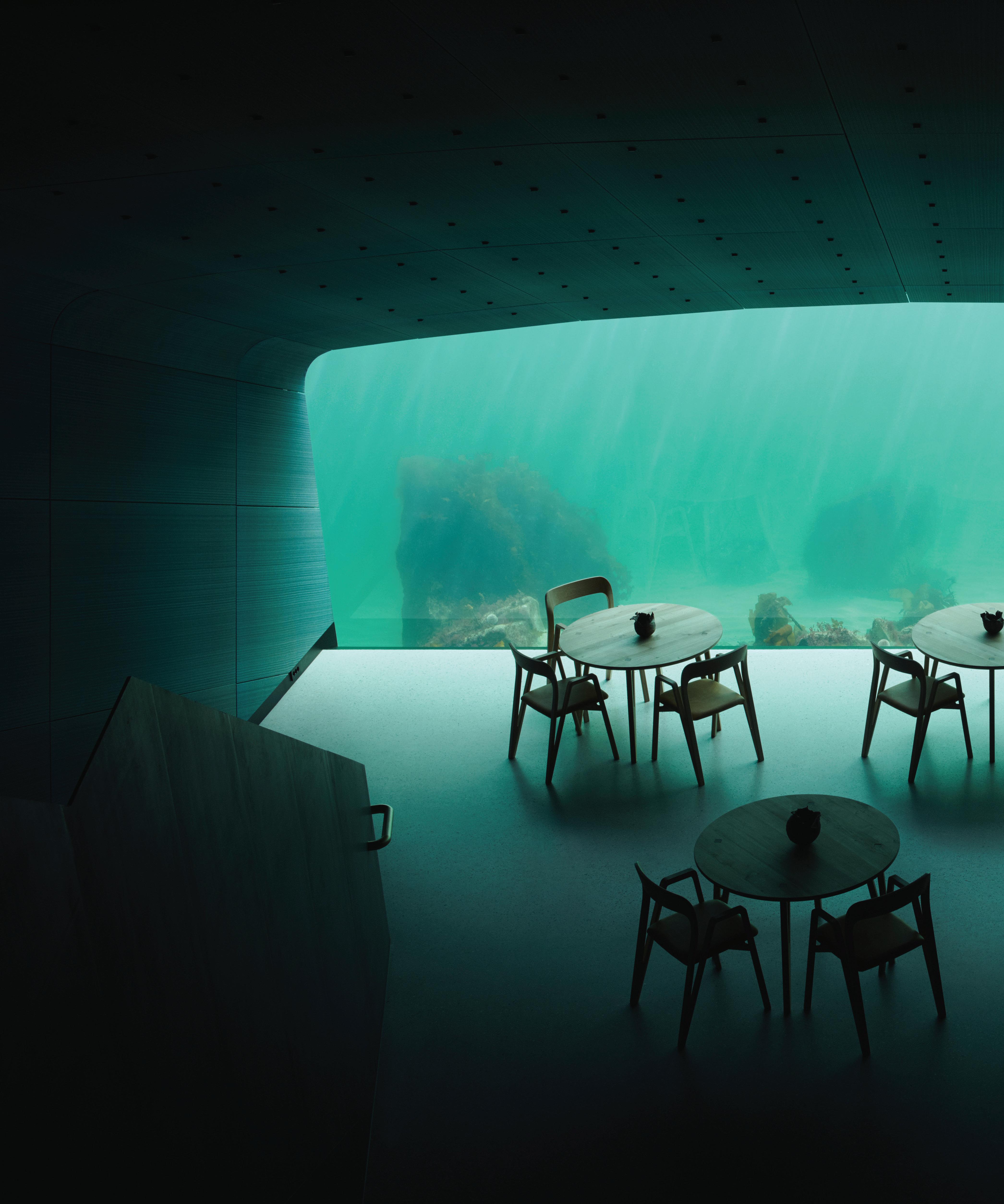
Reynolds Polymer Technology www.reynoldspolymer.com
CIRCLE 253
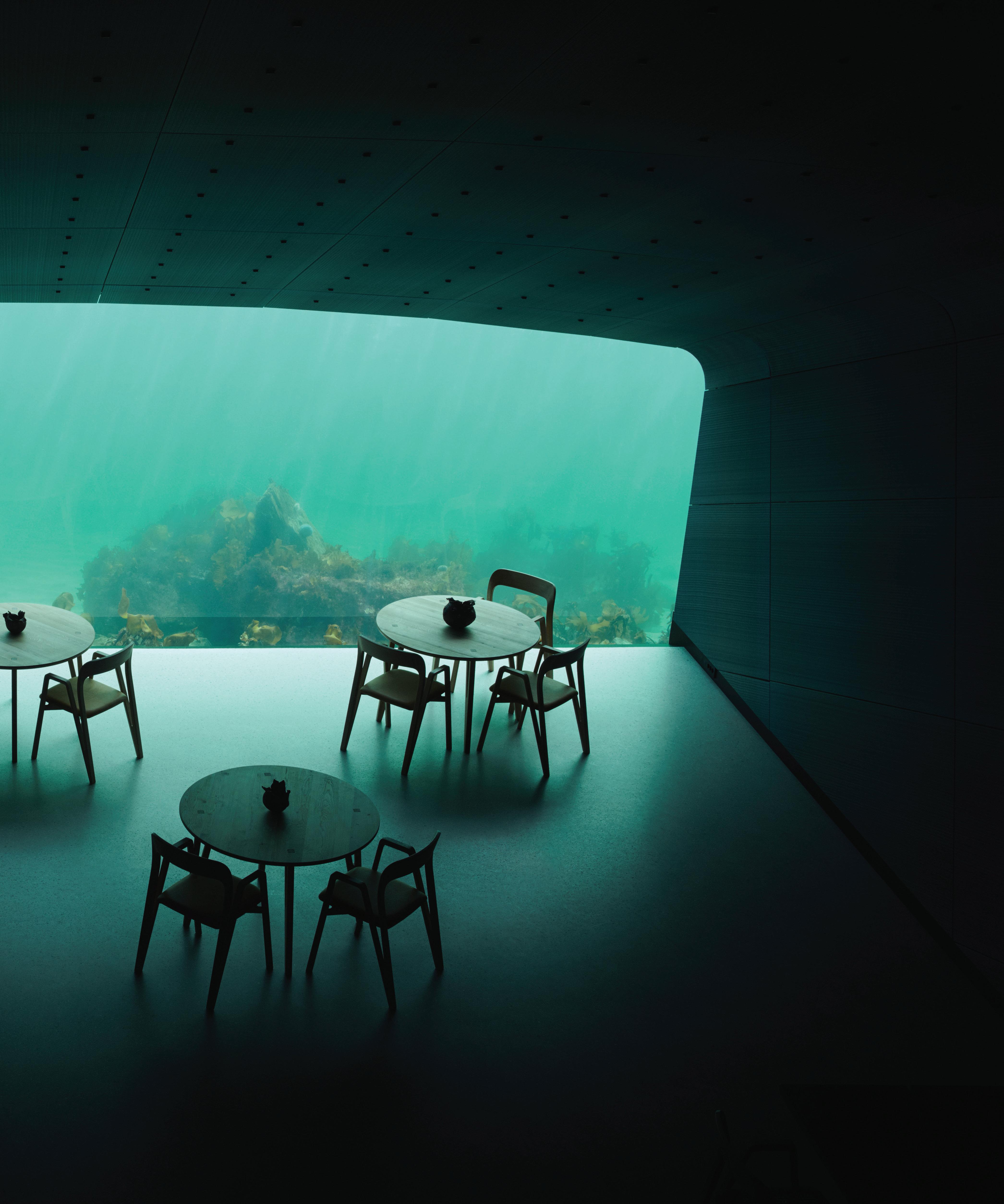
SEABED LIGHTING “By adding light to the area around the submerged restaurant, we can attract fish and observe the marine life at night,” explains Morten Jensen, Light Bureau's Country Manager in Norway.
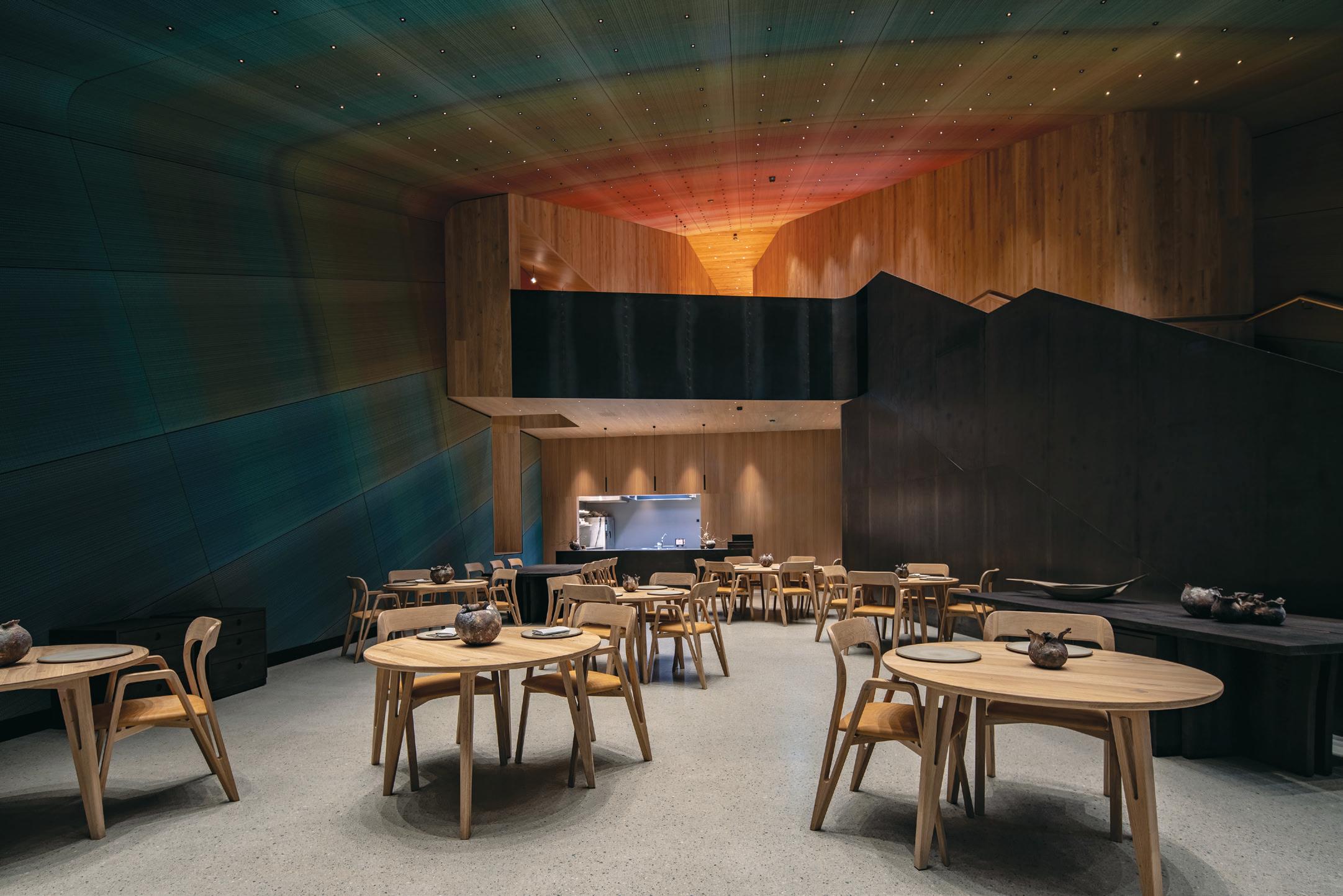
Tomasz Majewski Courtesy iGuzzini
warm oak paneling
The interior aesthetic was designed to be a calming contrast to the often intense conditions outside, while offering a heightened level of fire protection. The warm oak cladding, created in collaboration with local carpenter Hamran from local Norwegian oak, is 11-in. thick. The team crafted the paneling to create the illusion that one solid piece of oak ran from the entrance to the stairs and to the kitchen.
The lighting design team created Liquid Light at Under—a combination of LED lights with infrared sensors and acoustic detectors that capture data about what is happening in the room and constantly change the lighting scenario in response.
liquid lighting
Nearly 400 one-cell, recessed LED luminaires were integrated into the ceiling in a matrix pattern. The light sources are small with good glare control, which makes them almost invisible, appearing as if they are off, when seen from different perspectives. Each luminaire was precisely angled to accommodate the curvature of the ceiling, deliver light to the table surface, and avoid any reflection in the large panoramic window. “Our main challenges were to maintain a natural light and to create a safe atmosphere at the bottom of the ocean for the visitors. Due to the minimal amounts of daylight below the sea, we envisioned that the lighting ‘floats’ into the room where it is needed. It is finely tuned to the surroundings inside the restaurant and designed in harmony with the nature around with an aim of creating a visual ecosystem,” says Martin Jensen.
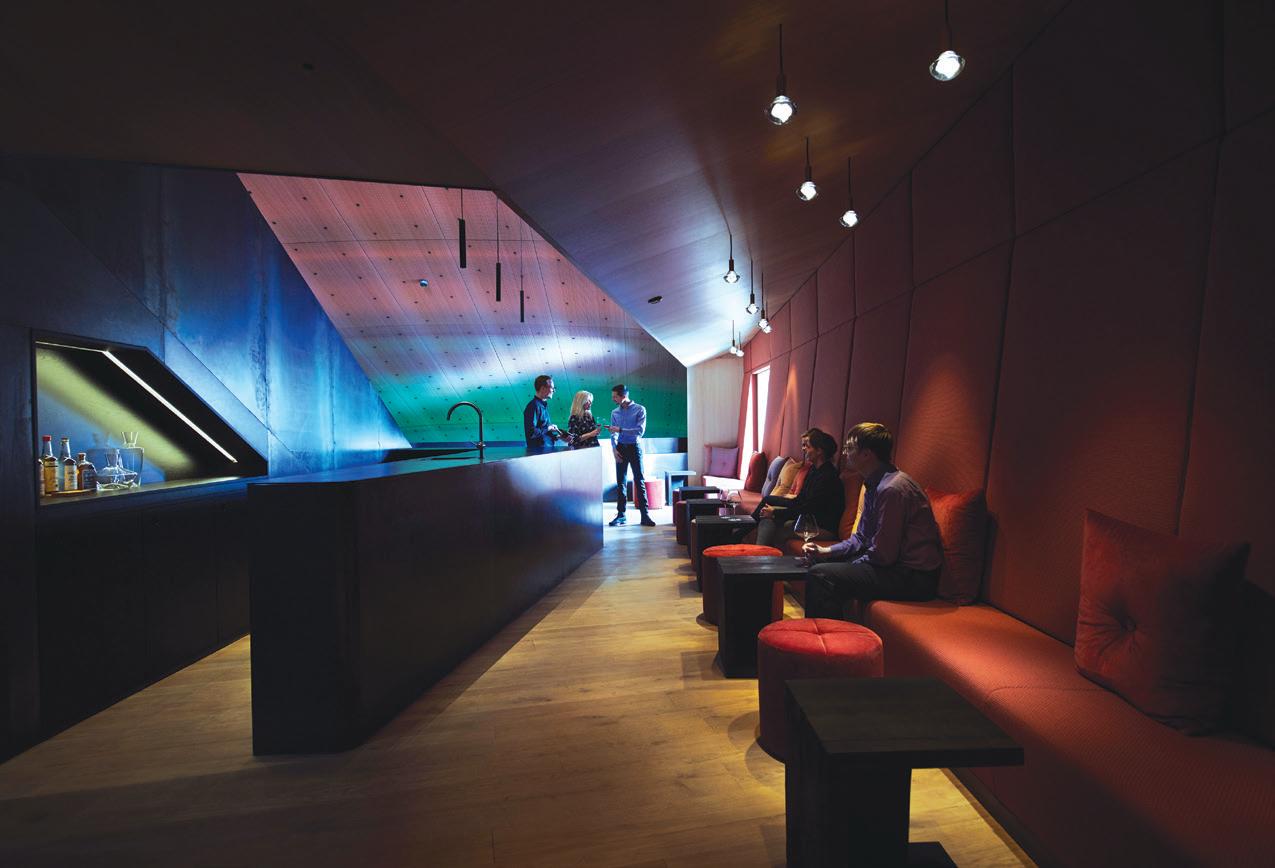
WOODEN WALLS AND FURNISHINGS The wood interior was created in collaboration with local carpenter Hamran from local Norwegian oak. Iguzzini Laser Blade XS Downlight www.iguzzini.com

CIRCLE 252
Tomasz Majewski Courtesy iGuzzini CUSTOM ACOUSTICS 137 Soft Cells acoustic panels by Kvadrat Acoustics were upholstered in the custom, multicolored textile Under—named after the restaurant for which it was developed; 126 Soft Cells Broadline planar panels, 11 Soft Cells Free-Form concave panels. Each multicolored panel has a unique geometry and look.

Kvadrat Acoustics www.kvadrat.dk
CIRCLE 251
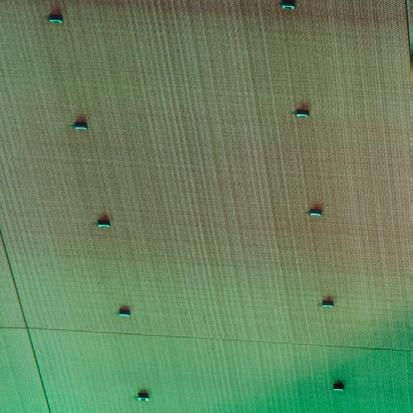
stunning acoustical ceiling
Snøhetta and manufacturer Kvadrat collaborated to develop the look of the acoustic textiles to mimic the sunset. “It was a challenge finding a material that would meet the safety requirements and at the same time be more than 20-meters long with a color gradient going from pink, red, and green—to a deep blue tone at the end when you are under sea level,” says Marlene Fenger Vedal, a Snøhetta team lead and interior architect. As diners ‘go under’ into the dining area, the acoustic environment steadily becomes crisper and stiller, while the colors melt from light reds at the restaurant’s entrance to dark greens and blues. The pattern across the ceiling ebbs and flows throughout the space. The acoustic ceiling solution meets the stringent functional and regulatory requirements of the project. It provides Class A sound absorption, top-tier fire-retardancy, optimal acoustic conditioning, and seamless integration with lighting fittings.
Just as the wood paneling was designed to appear as one solid piece, the chairs and tables have a continuous and uninterrupted form.

WOOD FURNISHINGS Hamran also created the furniture for the project. The Under collection, made from the same Norwegian oak as the paneling, includes a chair, a bench, a round table, and an oblong table. The continuous shape of each piece mimics the way the branches of a tree grow from the stem.
Hamran www.hamran.no
CIRCLE 250
